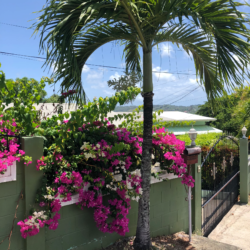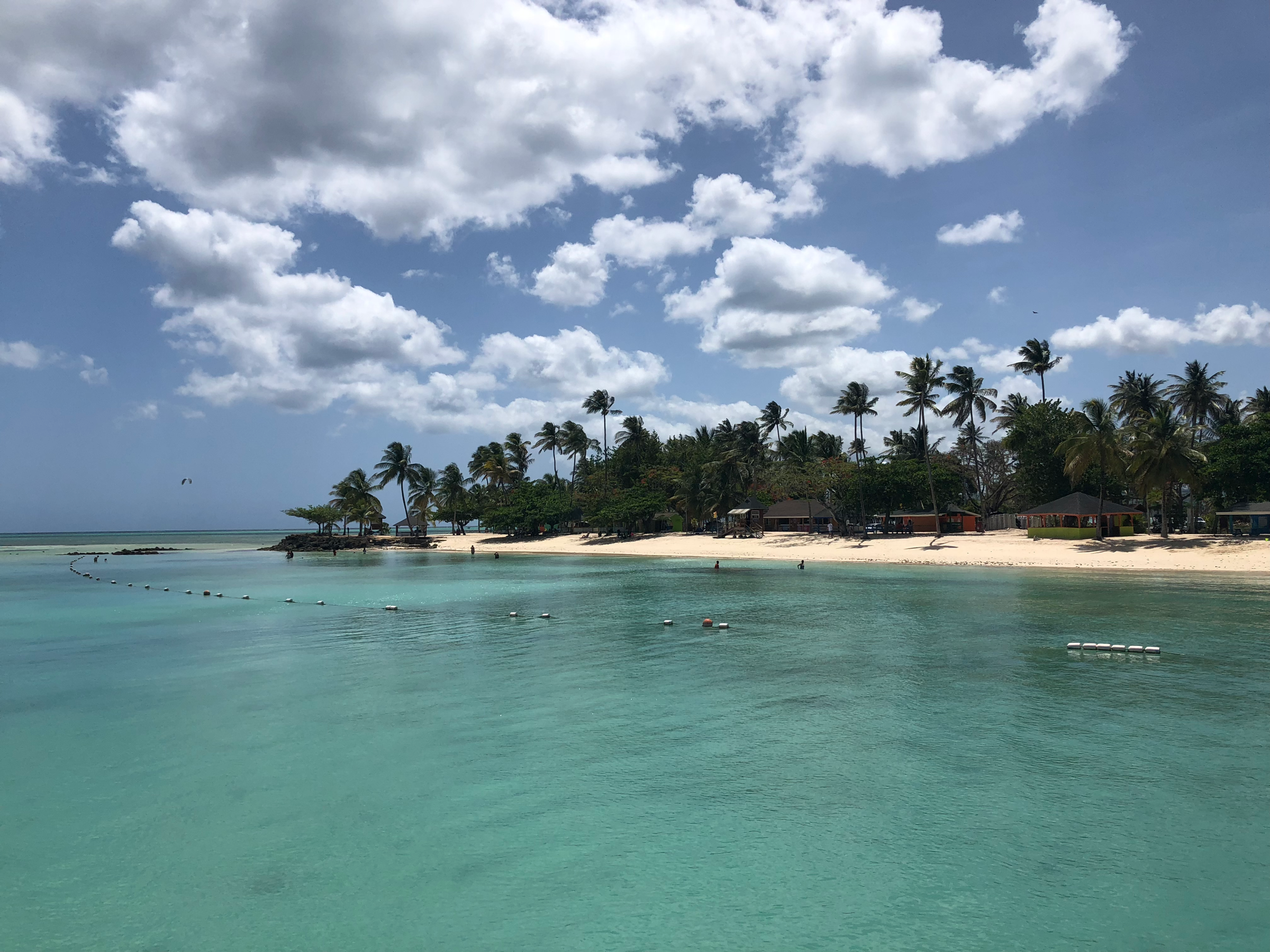
“In preparing for battle, I have always found that plans are useless, but planning is indispensable.” -Dwight D. Eisenhower
I never thought I would be quoting Eisenhower in a blog post about Tobago, but there you have it folks. Although the former president was referring to his past military career, he’s right on the money when it comes to travel planning as well. Before embarking on a journey, it’s completely counterproductive to map out every detail of every day, or even any detail of your time away. It’s true that I book my hostels well in advance, and maybe even work out an airport transfer or two, but the actual meat of my experiences- the attractions I visit, the food I eat, the places I go- are left more up to chance than one might think.
This isn’t to say that I don’t do my research. Dwight’s right: planning is indispensable. I thoroughly familiarize myself with the menu of things to do, but it wouldn’t make sense to pre-order all of my meals ahead of time. What if it were raining on the day I had chosen to go to the park or I wasn’t in the mood to tour a royal palace the morning I had placed it on the calendar? You have to be ready to go with the flow and be flexible with your schedule. We are often warned that things will go wrong- flights will be delayed; you’ll sleep through your alarm at the hostel one morning- and need to adjust accordingly, but occasionally your planning can be thrown out of the window for positive reasons too. The main variable you can never predict is the people you will meet along the way and how they will influence your time in a city or region.

I flew directly from New York to Port of Spain, Trinidad, where I immediately took one of the frequently-island-hopping propeller planes to A.N.R Robinson Airport in Tobago. On both of these flights, there were three groups of people: local Trinidadians and Tobagonians who were returning from The States, tourists in their Hawaiian shirts, Panama hats and flip-flops ready to party at an all-inclusive resort and me.
As I exited the airport in Tobago with my fellow passengers, we were greeted by sign-holding drivers from the various all-inclusives, ready to whisk their clients off to their respective resort compounds. Without exception, every single non-local passenger hopped into a van. The drivers noticed that I was walking towards the convenience store near the airport, from which my research had informed me, I could purchase local bus tickets. Wrongly assuming that I was confused, the drivers immediately started hawking their resorts, promising me good deals if I would only come with them. When I announced that I was heading to Scarborough (shock) and I preferred to take public transportation (double shock), they gave up and let me be. Little did I know that this decision to purchase bus tickets would change the course of my entire trip to Tobago.
I found myself passing the time at the bus stop with an older Tobagonian woman who, having grown up in Scarborough, gave me some tips on things to do and places to sample the best local food. Before the bus had a chance to arrive, a young man in a car suddenly came to a halt in front of our bench. Leo, who soon was to become a fast friend in Scarborough, was acquainted with this woman and had recently done some yard work for her. The woman leaned over and whispered in my ear, “He’s a good guy. You can trust him.”
I assumed Leo would drop me off in downtown Scarborough, but he drove me right to my hostel door. After exchanging numbers, we promised to hang out sometime during my stay. The following day, as I was walking to the Botanical Garden, Leo drove past me again. We laughed and remarked that the universe was trying to tell us something. That evening, Leo texted me saying that his boss had given him tomorrow off and he and his girlfriend, Reine, were going to pick me up at the hostel the following morning and show me some of their favorite spots on the island. I was thrilled and humbled by the kindness I was being shown, but what of all my plans? What of my to-do list in Scarborough? (Eisenhower in my head: plans are useless! Throw them out!)
I had no idea what adventures Leo and Reine had in store for me, but I went to bed excited to see what tomorrow would bring.
Pigeon Point
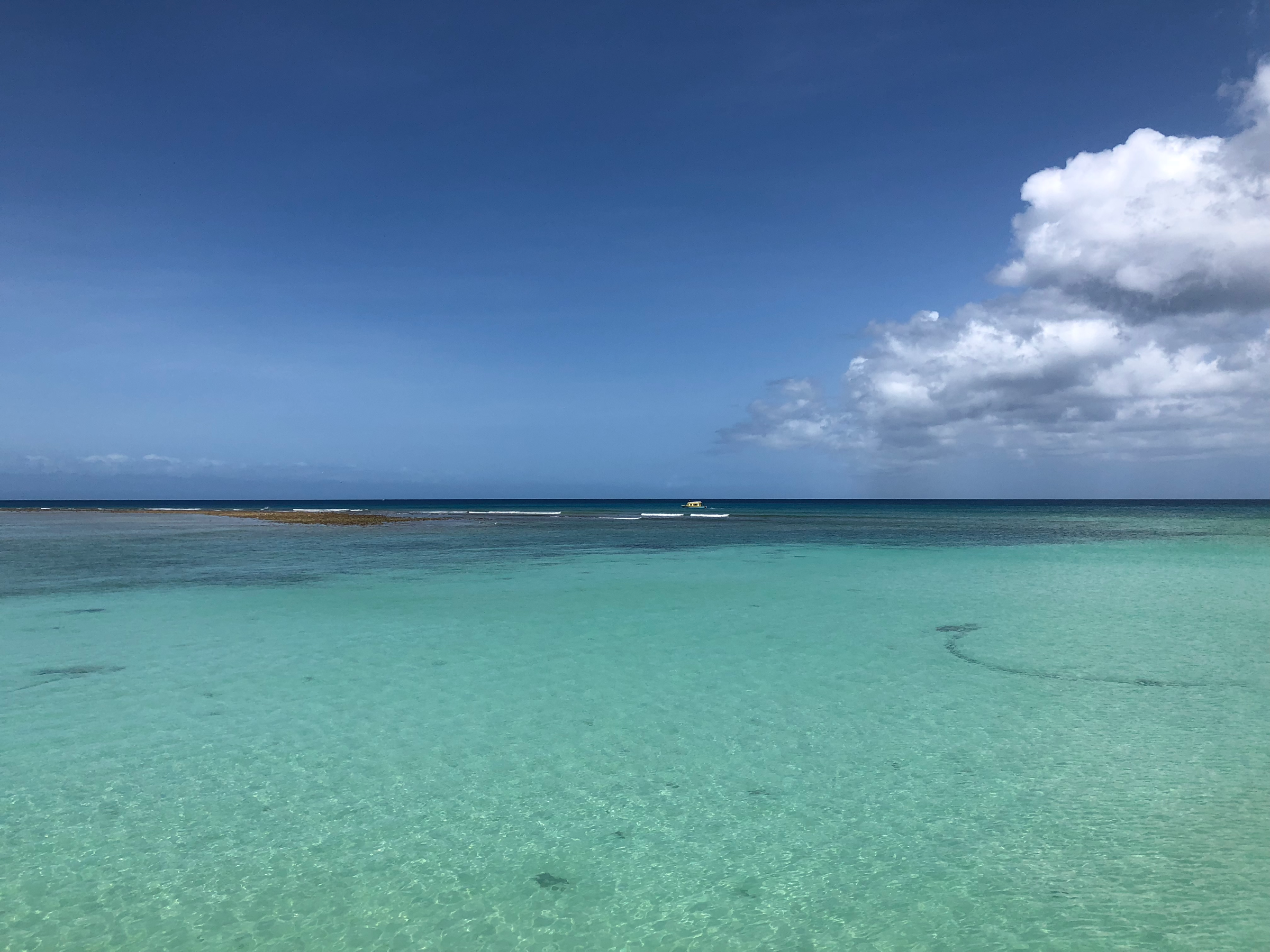
Leo picked me up right after breakfast, having lined up a jam-packed itinerary of places to visit around his home turf. After stopping at Reine’s house, we made our way to Pigeon Point, Tobago’s most famous beach, whose pristine shores are peppered with history and a bit of controversy too.
Before Trinidad & Tobago achieved independence from Britain in 1962, many of Tobago’s beaches were privately owned by colonial families, barring the local Afro-Caribbean population from enjoying their island’s natural pleasures. After independence, the Black Panther movement gained traction in Tobago, with one of their chief aims being to take back the island’s beaches and return them to the public. In the early 1970s, over 15,000 Tobagonians marched on Pigeon Point, demanding that they be allowed to swim there. The protestors eventually won out, and when the Tobago House of Assembly was re-formed in 1980, one of their missions was to take ownership of the beaches and turn them into heritage parks, accessible to all.
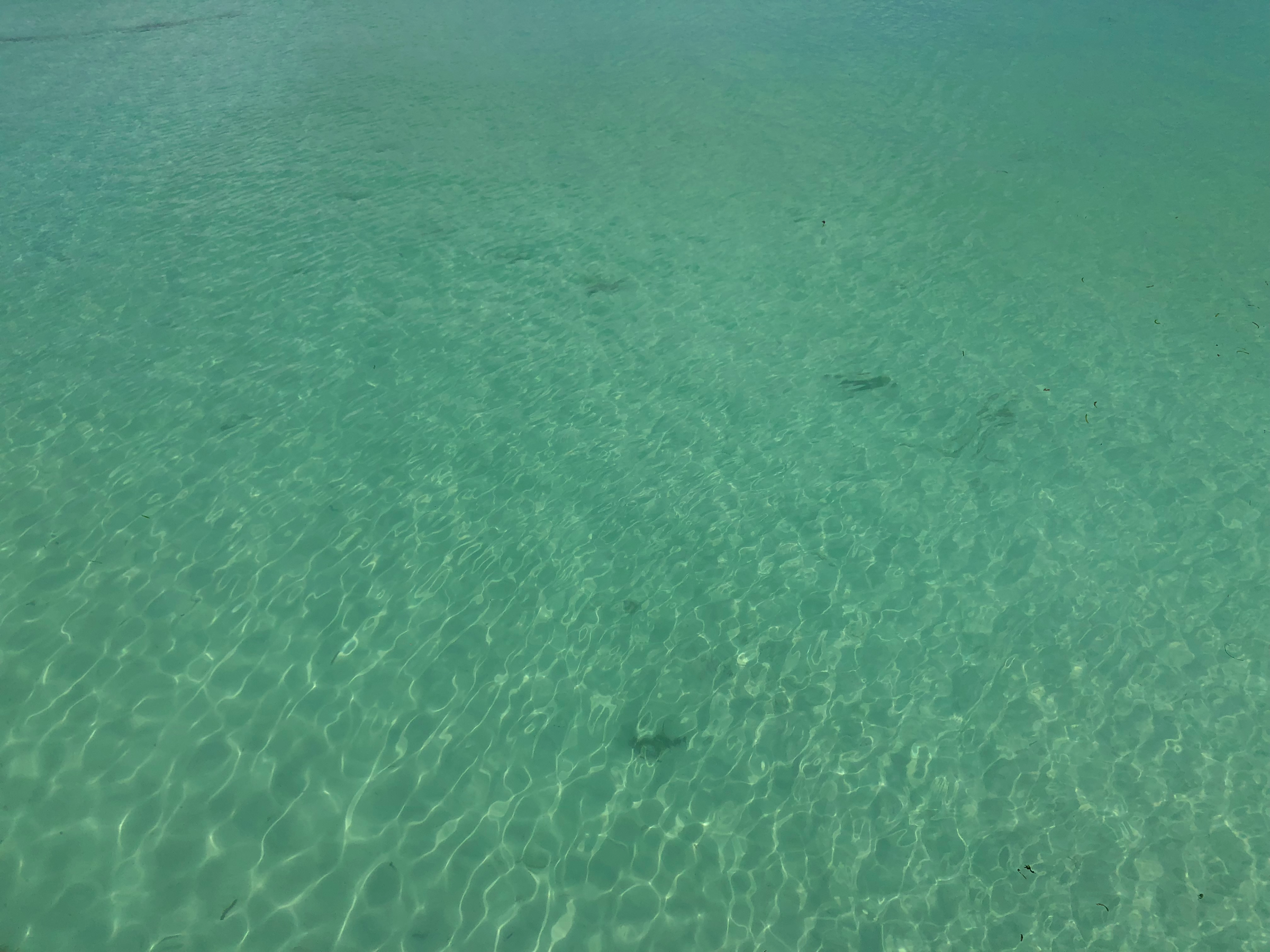
The House of Assembly has since installed a jetty, cabanas, restaurants and other amenities at Pigeon Point, but unfortunately the government’s spending got away from them and in the early 2000s, an entrance fee was required of all visitors entering the beachfront. Pigeon Point remains the first and only public beach in Tobago that charges admission, much to the consternation of the local fishermen who once crossed the beach in the mornings to reach their boats in the adjoining bay. An uproar followed, but the fee is still in place.
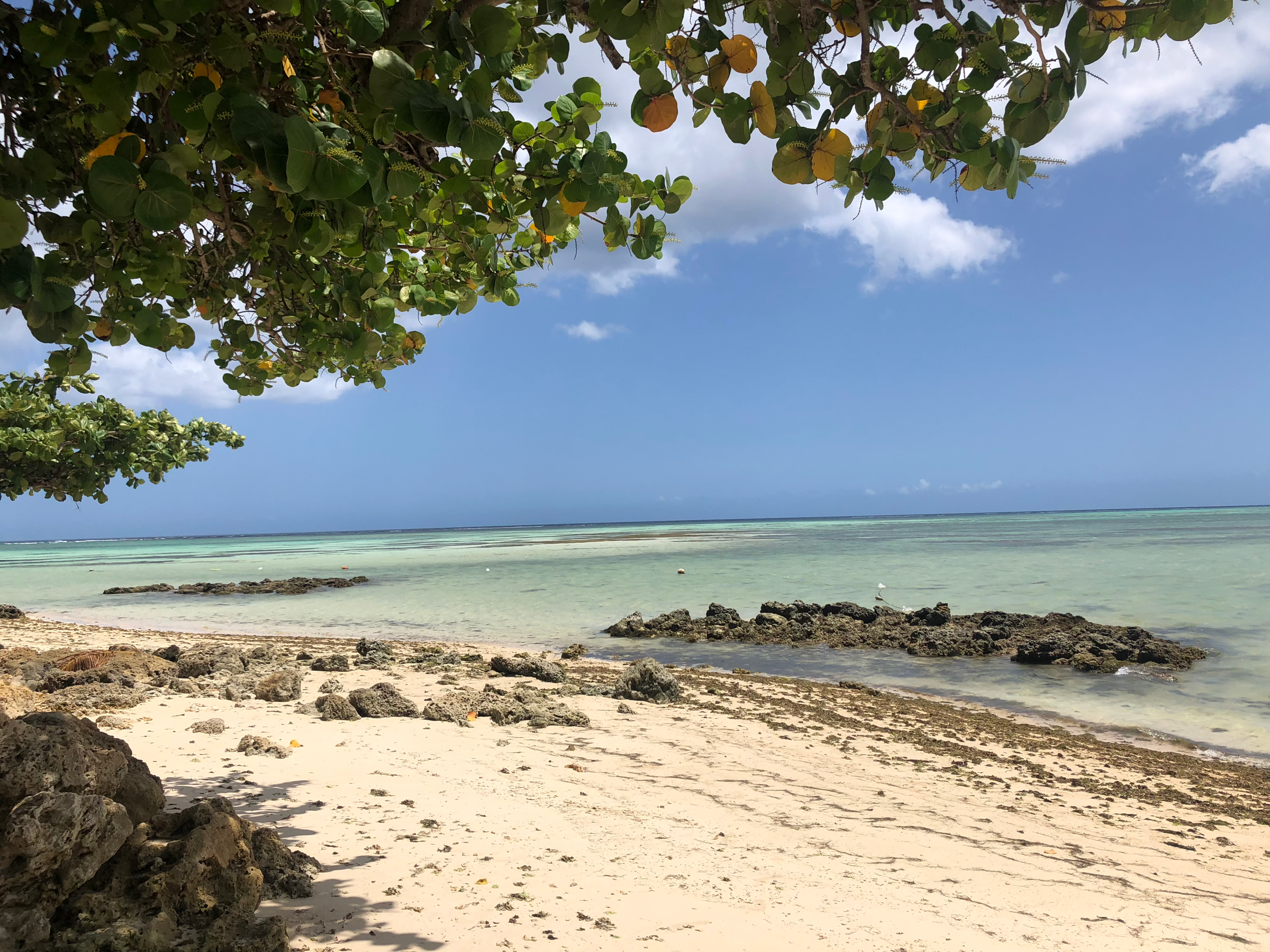
Here you can see Buccoo Reef, one of the three large coral reefs that surround Tobago. Glass-bottom boats regularly depart Pigeon Point to give visitors a peek at the aquatic critters that call the coral home. The reefs are highly protected, and not just for wildlife conservation purposes. Without the presence of the reefs, the island shores would erode and begin to drift away into the ocean. The coral reefs keep Tobago intact, protecting both the physical island and its inhabitants.
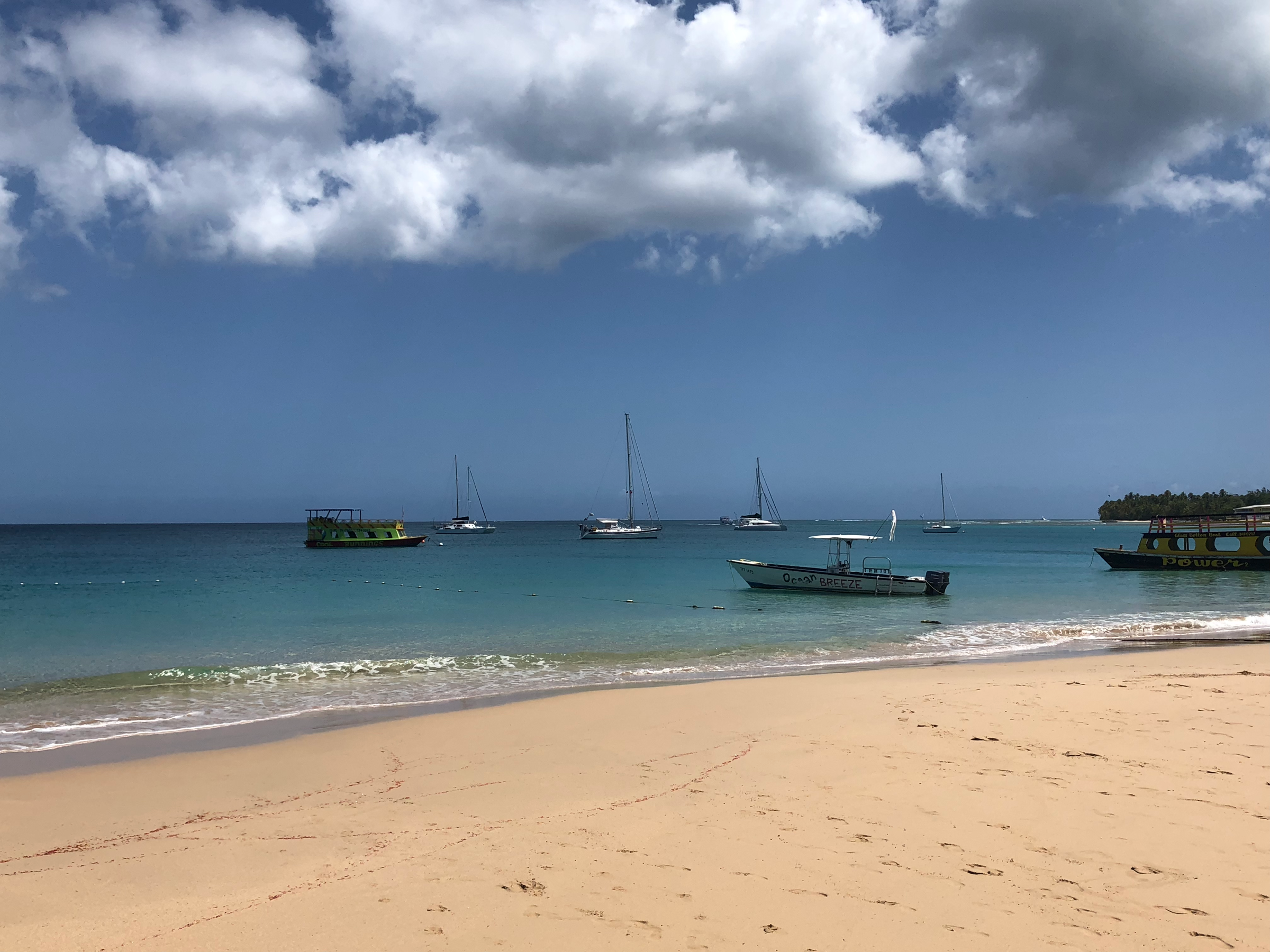
Beaches in Tobago can be a touchy subject. After liberating the waters and sandy shoals from colonialist hands post-independence, all-inclusive resorts have again begun to privatize the land in front of their compounds, cutting off local access from those beaches once more. As evidenced by the the rocky history at Pigeon Point, the balances between the needs of tourists and locals and the economy and ecology is a tricky one to get right, still calling for a nurturing hand in the future.
Buccoo
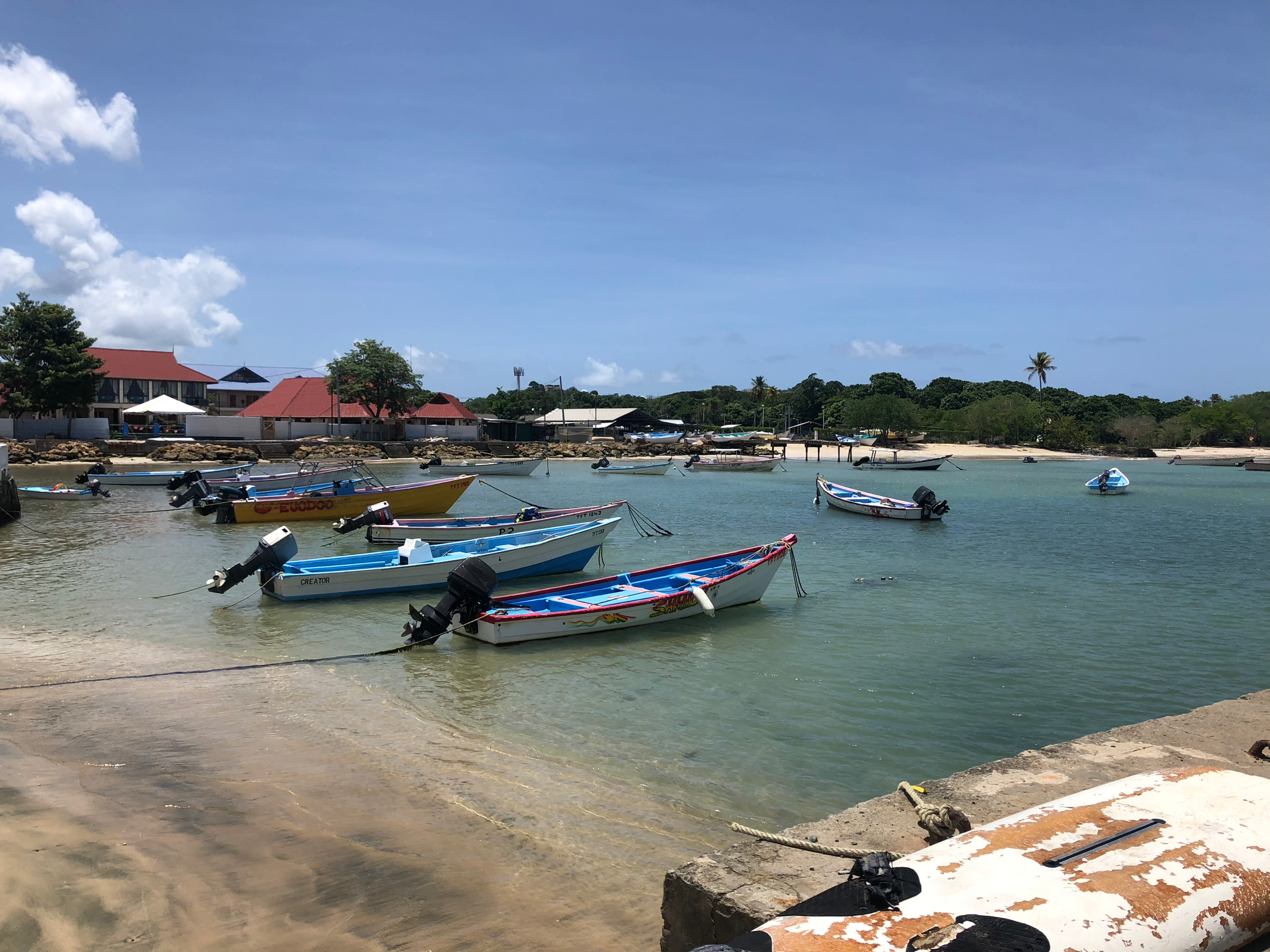
As you travel along the Caribbean coast of Tobago, you will encounter bay after bay full of fishing boats and men working together to drag their seine nets back to the shore. Trinidad & Tobago exports over $20 million worth of fish and other seafood every year, mainly to the United States, South America and China. Of course, whatever is caught will also be sold at the main market in Scarborough, as well as in small roadside stalls along the coastal road.
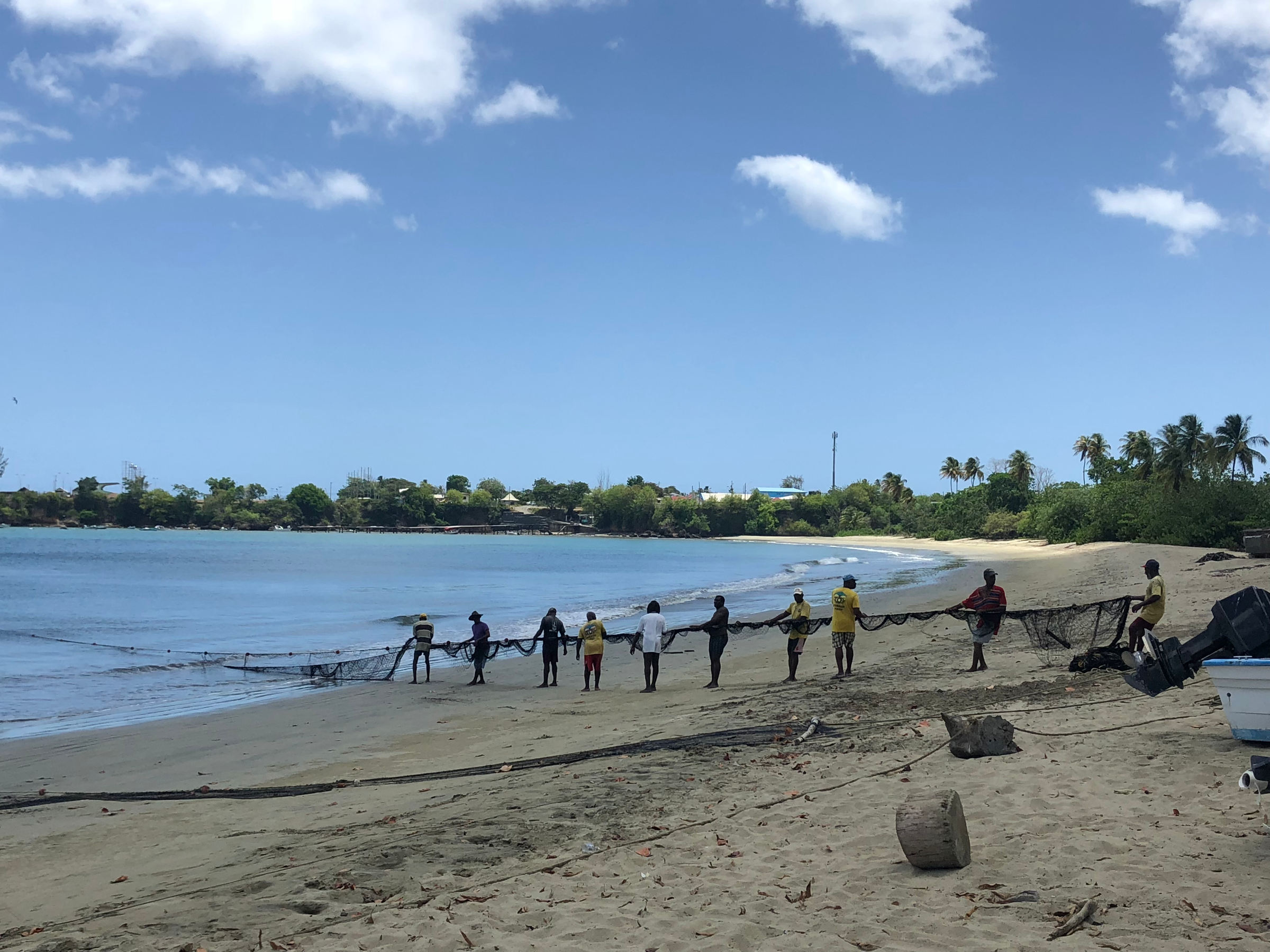
Using seine nets remains one of the more popular ways to gather fish on the island. When the device is fully straightened, it looks something like a Volleyball net that stretches for hundreds of meters. The bottom is weighted down and the top has little buoys to keep the net afloat. The net is pulled out longways across the beach and then the middle is paddled out into the water. The two ends are brought together, ensnaring whatever is in the bay and then heave-hoed onto shore, the men tugging on the line in unison.
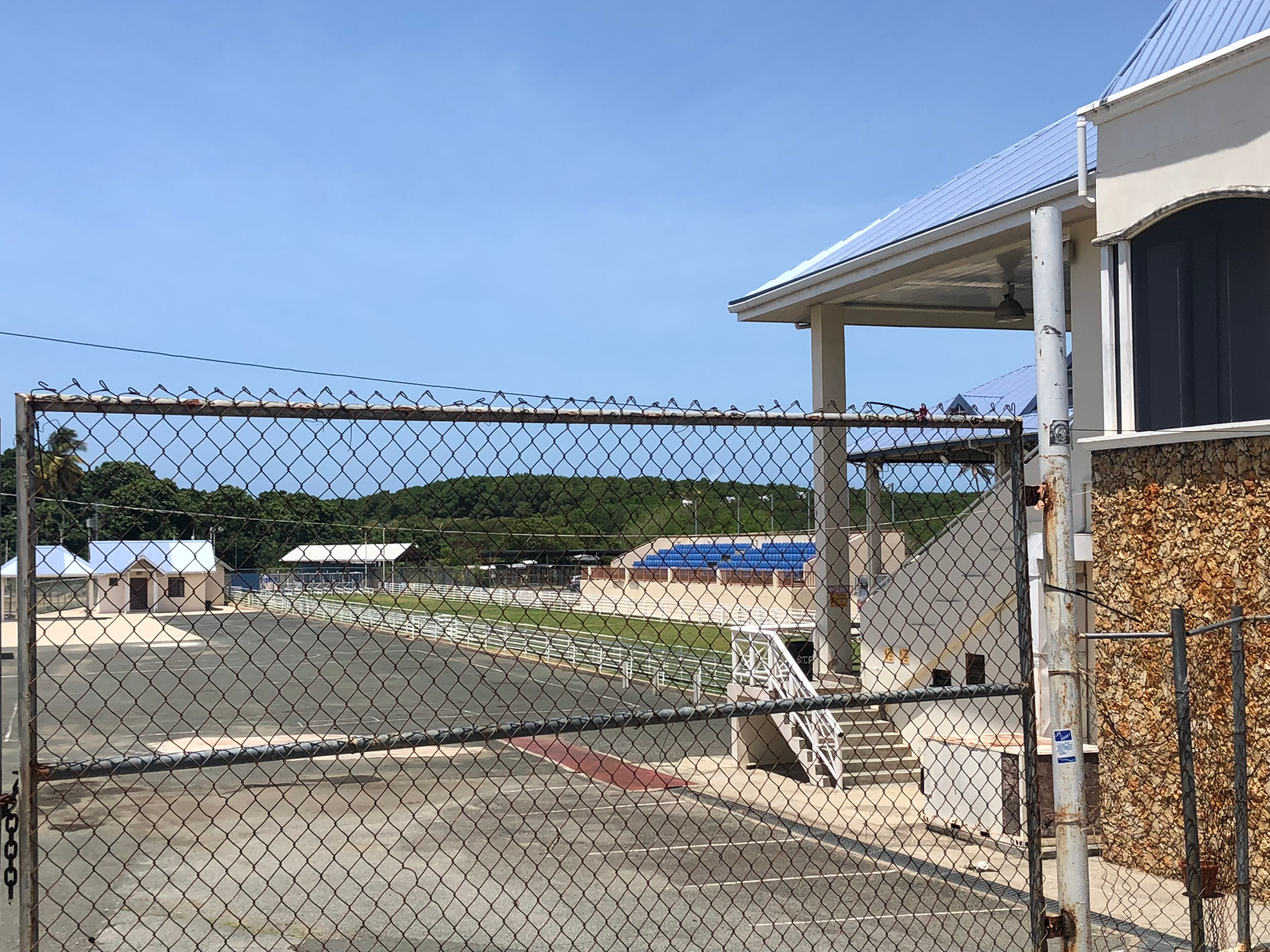
As I mentioned in my previous post, the most-followed sport in Tobago, behind football (soccer), is goat racing. The activity originated in Tobago, with the first races taking place here in Buccoo in 1925. The event is held on the Tuesday after Easter, which has become a Tobagonian public holiday. Horse racing was historically only open to the British elite and took place the day after Easter. The Afro-Caribbean community thus began their tradition of goat racing on “Easter Tuesday” and although horse racing has since vanished from the island, the goat races grow in popularity every year.
Goats are notoriously stubborn creatures and those who compete must be trained from birth to run the 100m (300ft) dash with their jockey in tow, holding onto a rope tied around the goat’s neck. If a goat outruns his jockey, the goat is disqualified, forcing the pair work in tandem rather than simply possessing the fastest animal to cross the finish line. In the morning before the race, the goats and their jockeys parade through the streets of Buccoo, where revelers not only cheer them on, but place their bets on who will take top honors throughout the day. (Some goat compete for over a decade and become well-known and beloved by the Tobagonians.)
Plymouth and Great Courland Bay
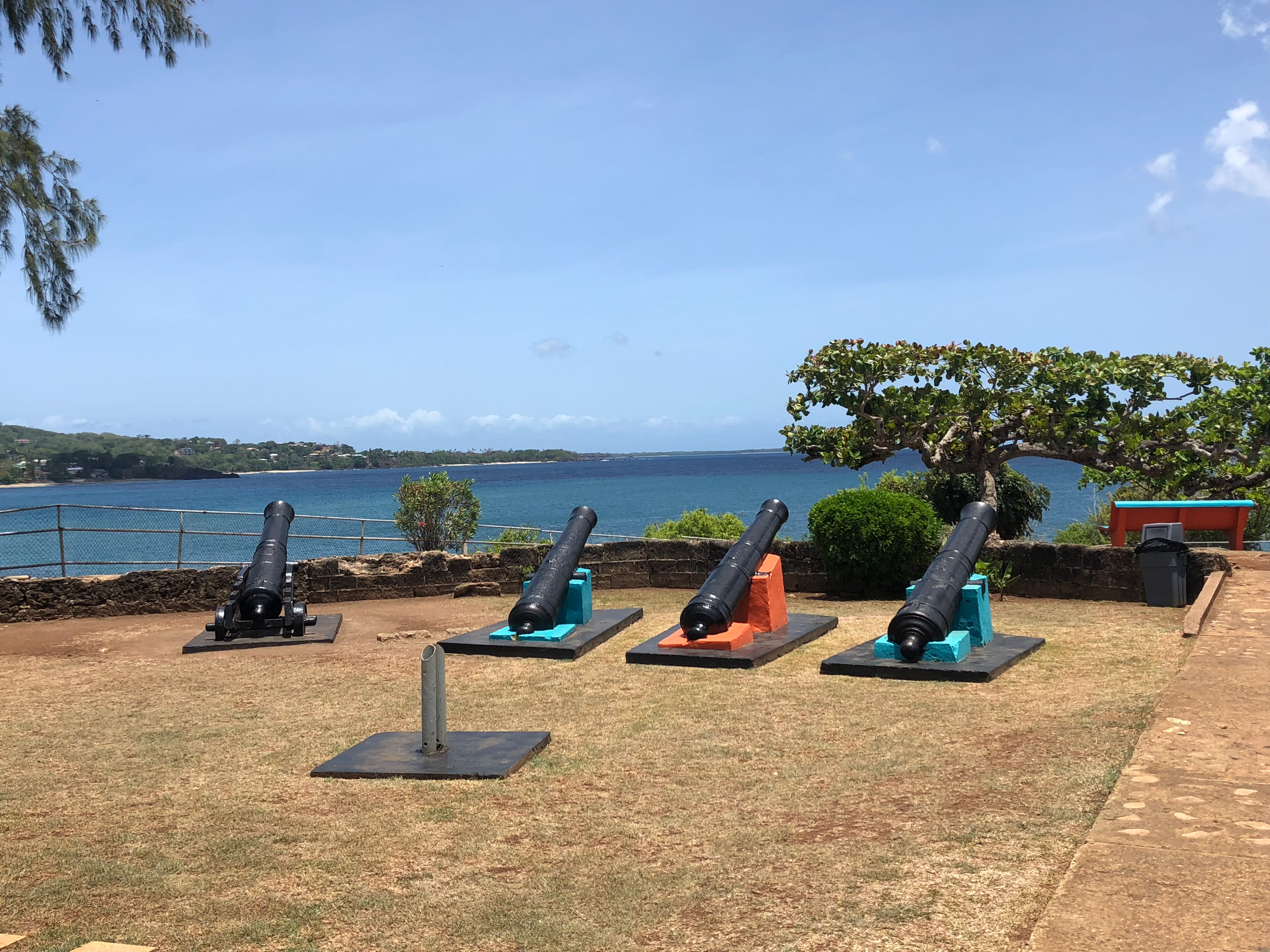
Fort James, named after the leader of the Latvians who controlled Tobago during parts of the 17th Century, is the oldest surviving fort on the island, dating back to 1650 (over 120 years older than Fort King George in Scarborough). While the Dutch were attempting to establish a colony on the southern side of Tobago, the Latvians settled here in Plymouth, hoping to be the gatekeepers of trade with the other Caribbean colonies.
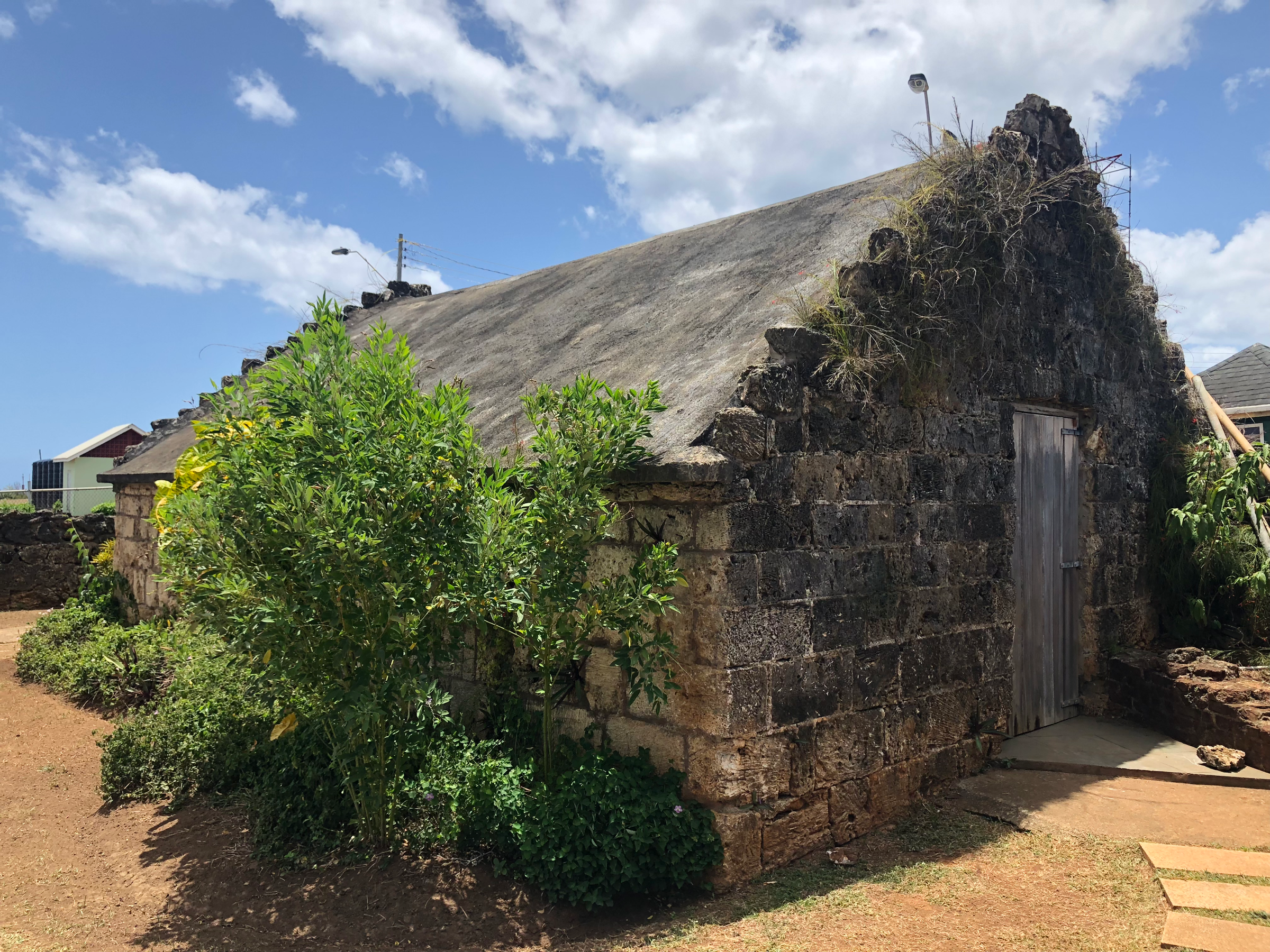
When the Latvians ceded their stake in Tobago to the British, Fort James’ firepower was increased by its new owner and cannons were added to protect against pirates and other invaders. Slaves captured Fort James several times during rebellions on the island, but the British would squash these uprisings by sending a fleet from a neighboring colony to help wrestle back control of the military fortification.
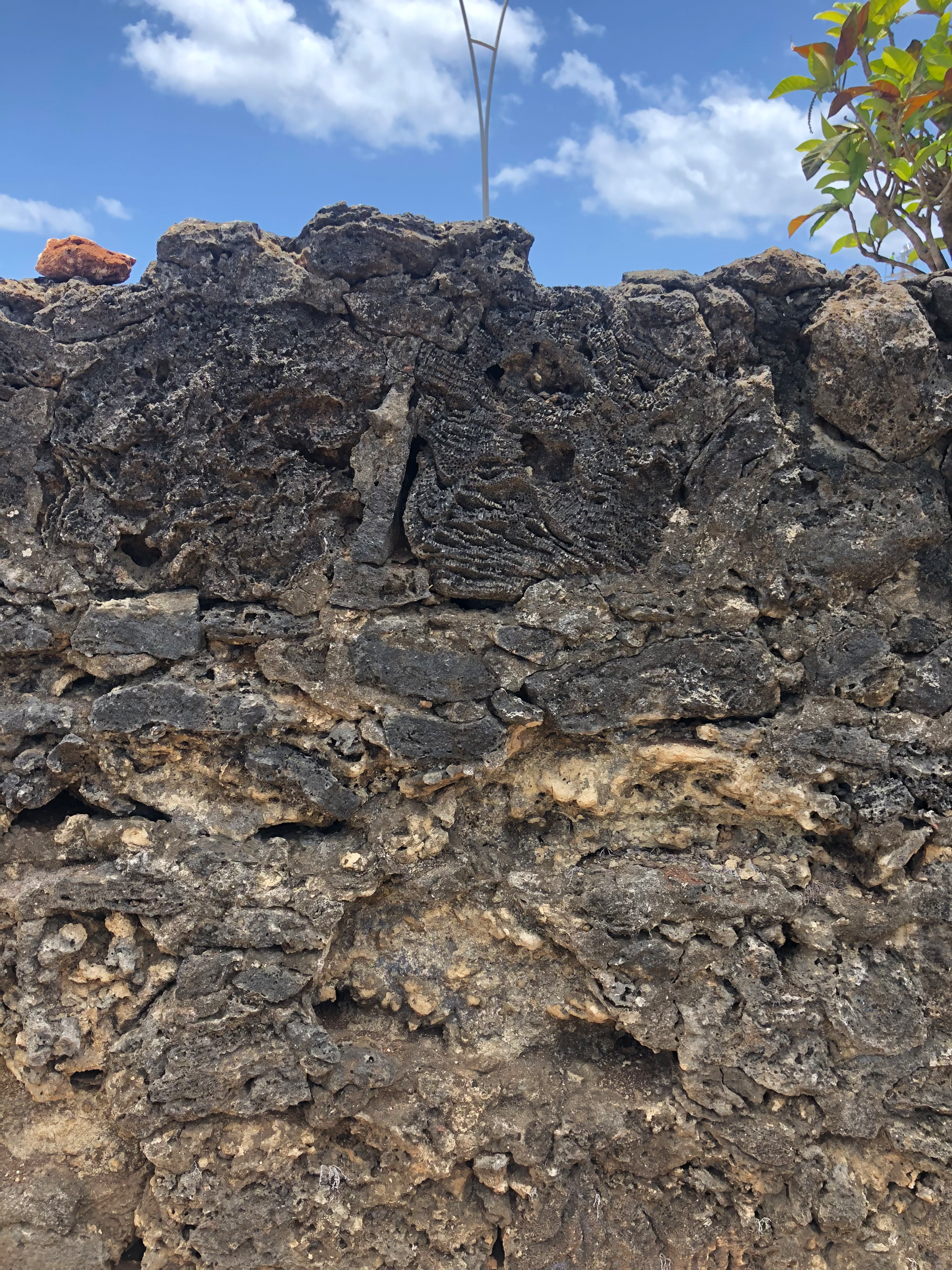
If you look closely at the walls of Fort James, you will notice that they are made from pieces of coral from the ocean and bits of the volcanic rock that form Tobago’s “Main Ridge” that traverses the island. Fort James is hardly as impressive as Fort King George, but is worth visiting in its own right due to these unique building materials and the spectacular views of the bay.
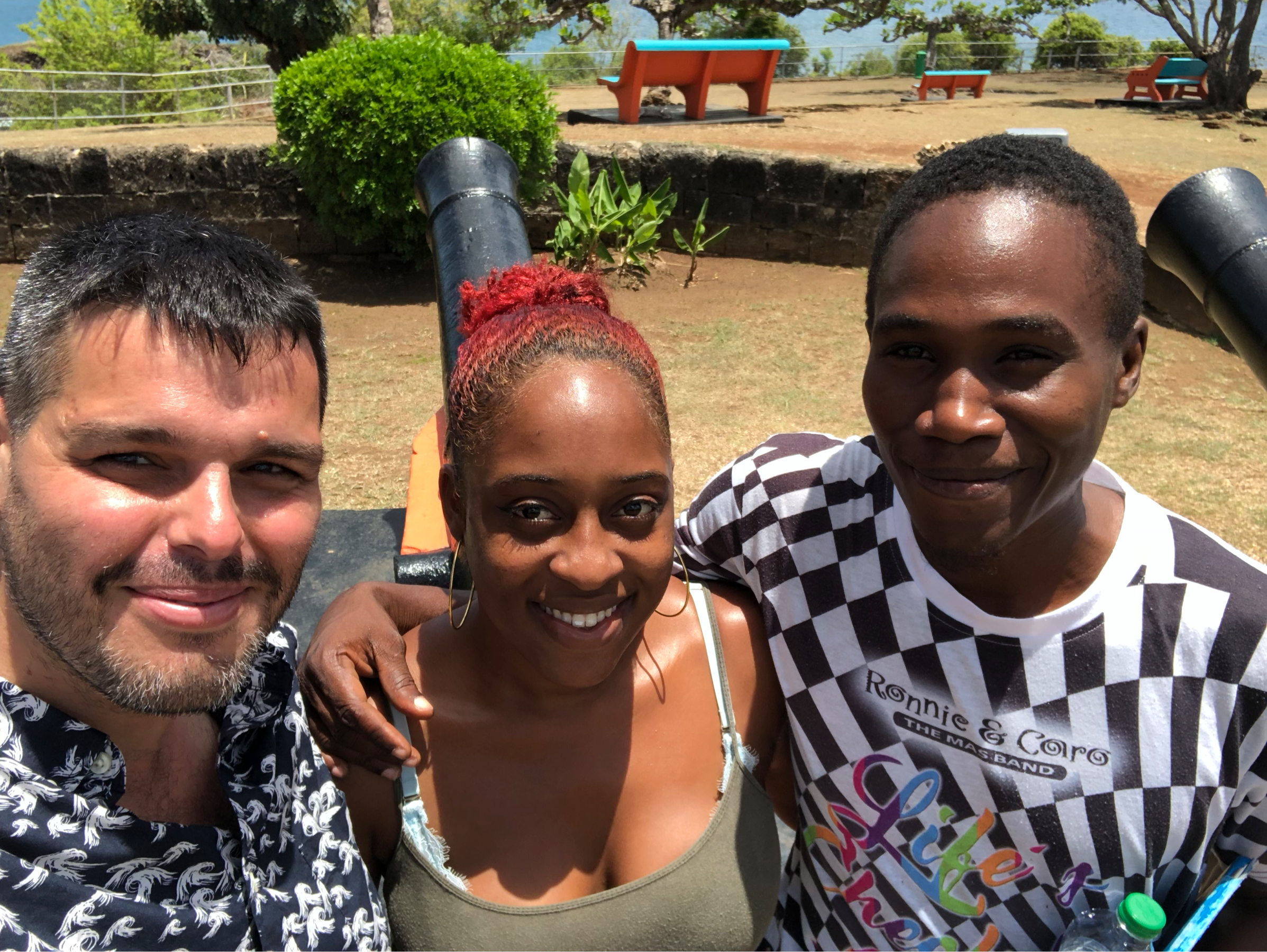
Roti

Having already worked up an appetite, we stopped to get some roti for lunch at a nearby seaside shack. Before I came to Trinidad & Tobago, I only knew roti as a thin Indian bread, somewhat similar to naan. Here, “roti” refers to the entire burrito-like meal that is wrapped in the soft bread and served-up like a folded sandwich. The typical filling is made from potatoes and chickpeas, seasoned with onions, peppers, garam masala and other spices. Some protein is then added to the top; vegetarian options are typically stewed squash and/or sweet potato. Roti is extremely filling, but also inexpensive. This street food will only set you back a couple bucks, but it will more than tide you over until dinner.
Mount Dillon Lookout
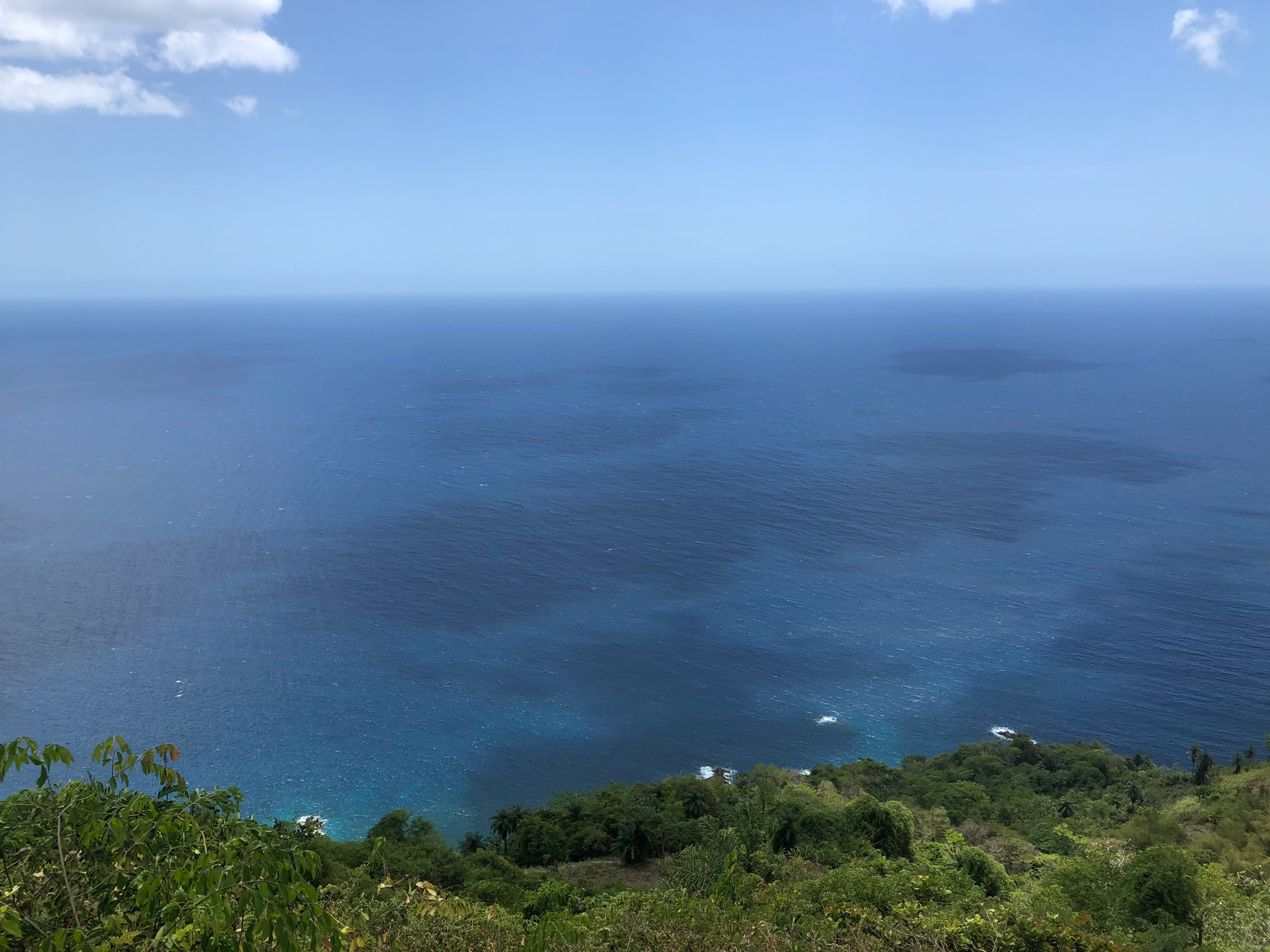
Tobago may be a small island at only 40km (25 miles) long and 10km (6miles) wide, but the nation certainly doesn’t feel small. Thanks to the Main Ridge, the mini-mountain range that spans 2/3 of the island, Tobago is dotted with dramatic cliffs, snaking roads and hillside lookout platforms that allow you to peer off into the horizon.
One such vista is atop Mount Dillon, a 422m (1384ft) peak along the northern coast. The views truly are breathtaking; on a clear day, you can see all the way to Grenada!
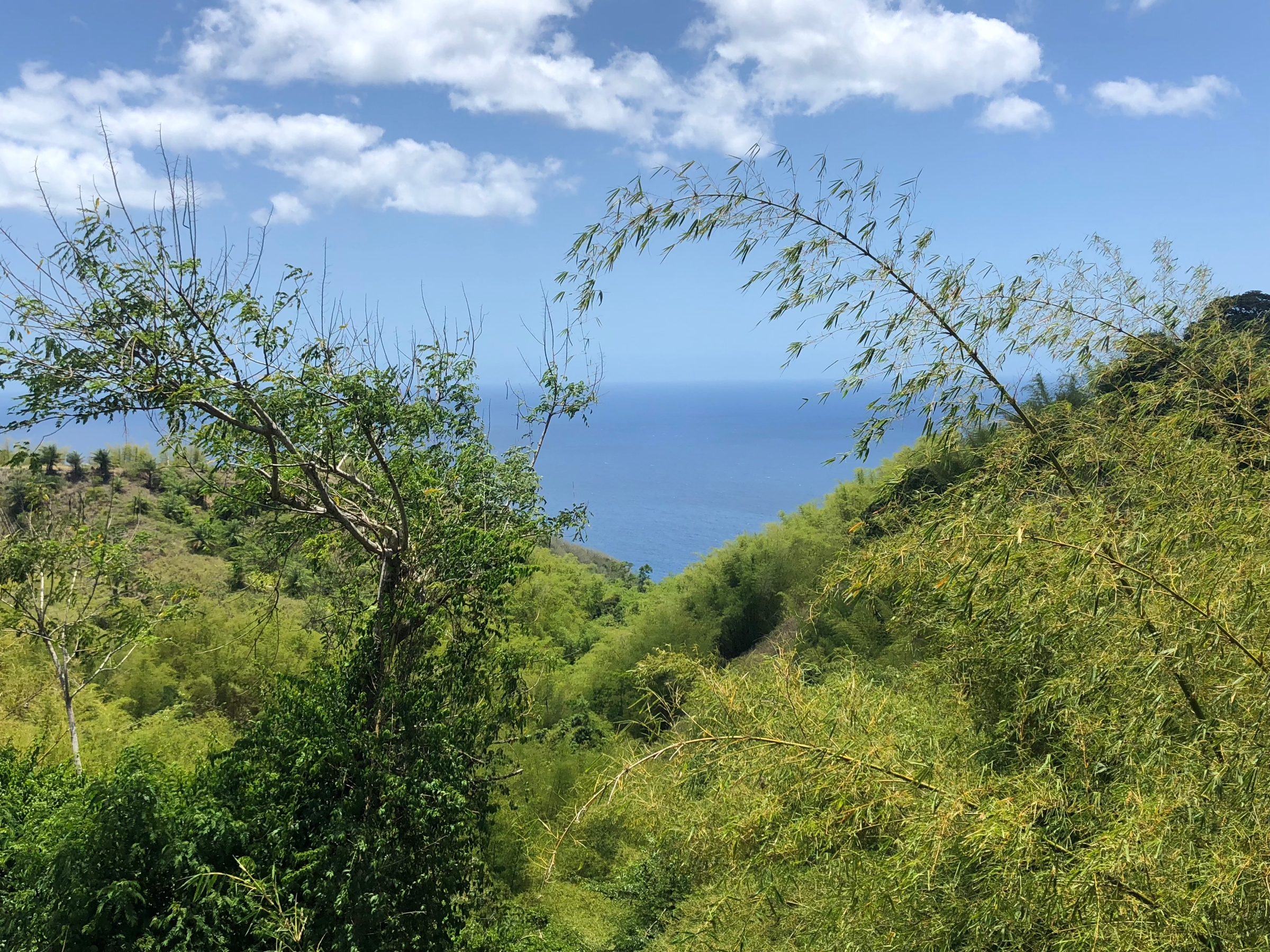
Tobago is a friendly place where everyone seems to know everyone else. As we twisted and turned up the road to Mount Dillon, we came across two acquaintances of Leo. Without hesitation, he pulled over and told them to hop in and join us for as long as they liked. This is simply the Tobagonian thing to do; the more the merrier and always offer someone a lift if you have room.
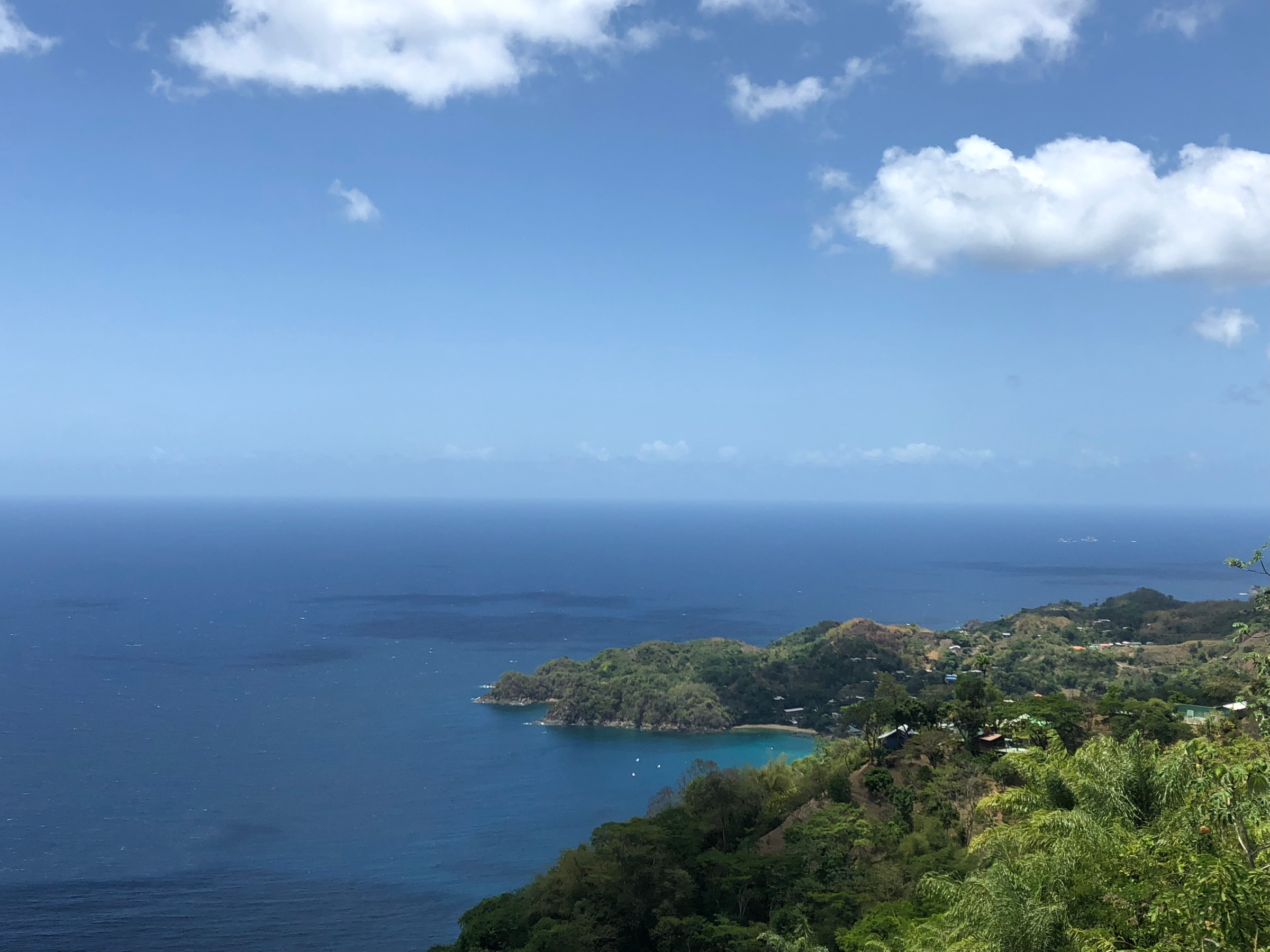
When I first looked out at the water, I wrongly assumed that the dark patches you see were sections of the off-shore coral reefs. These blobs are actually shadows cast by the clouds above! The water is so clear that the shadows penetrate all the way down to the sea’s floor, creating what looks like a series of ink-blot tests along the coast.
Looking to your immediate right, the next town over from Mount Dillon is Castara, which rises up into the hills surrounding the semi-crescent bay that forms its popular beach. Leo was born and raised in Castara (also home to Tobagonian President, A.N.R. Robinson) and he was excited that his hometown was next on the list.
Castara
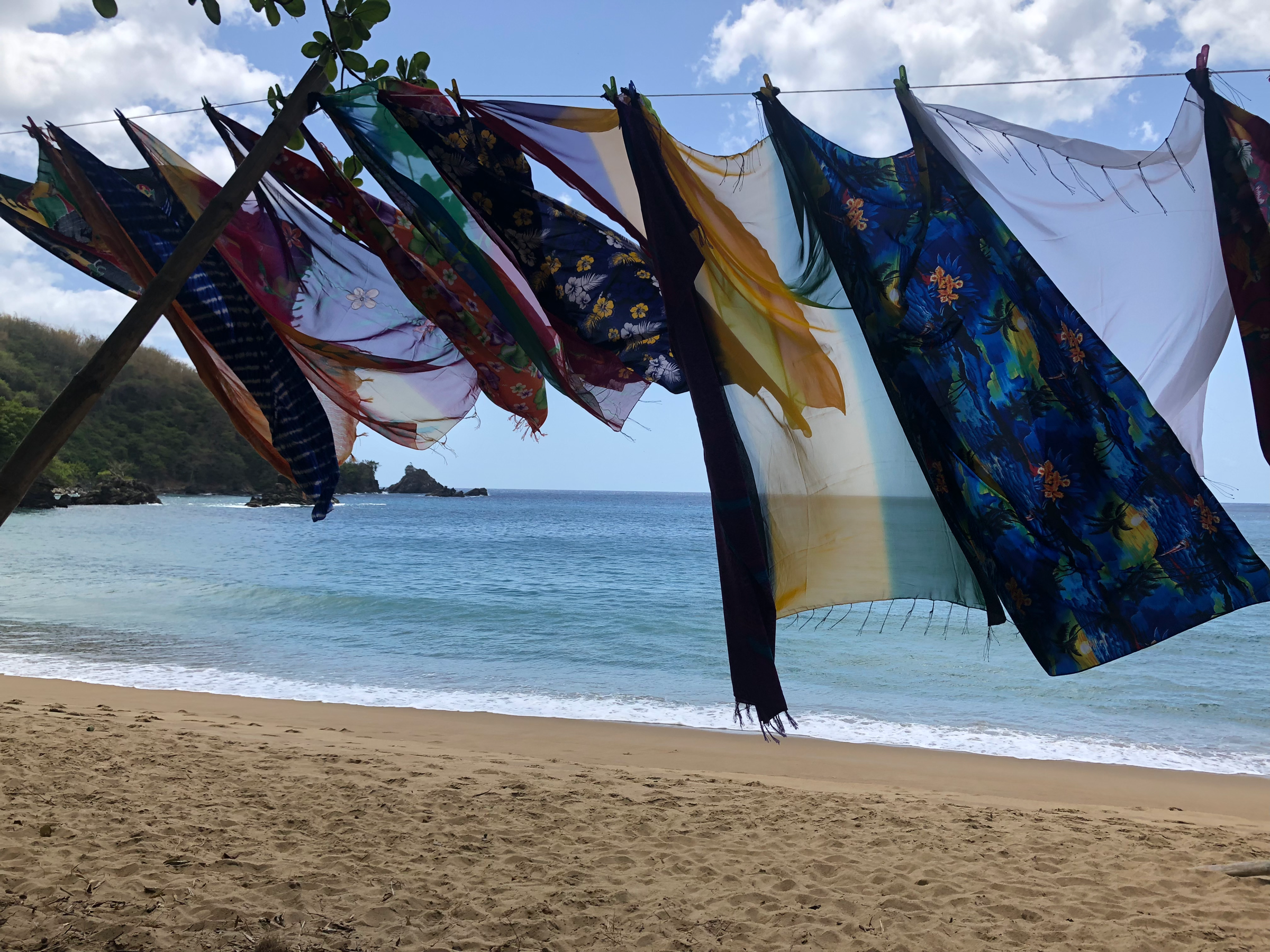
Our two tag-a-longs wished us well as we parted ways in Castara as Leo showed me around where he grew up. Castara felt markedly different than anywhere else I had been in Tobago thus far, setting the tone for our next leg of this day trip. Scarborough is full of hustle and bustle; Buccoo and Plymouth, while smaller, still have a palpable energy in their environs. Castara turns to Scarborough and says, “Dude, relax. Take a chill pill.” It was only early afternoon, and people were already liming outside the fish fry along the beach.
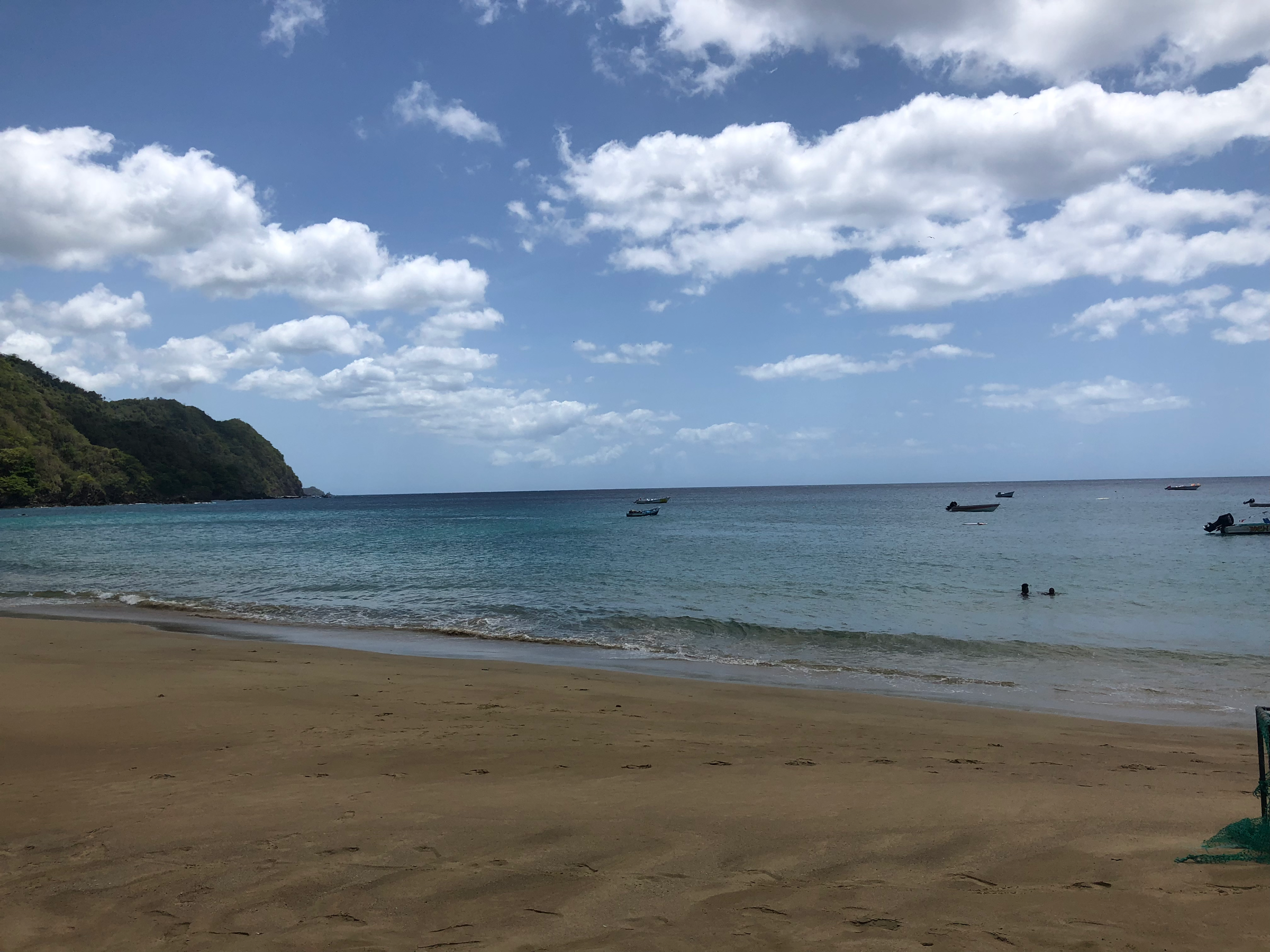
In New York, when people talk about going to the beach, it’s in terms of a “beach vacation” or “beach weekend getaway.” It’s a special event that doesn’t happen often. In Castara, the beach functions as the central square, the main meeting place, the after-school hangout spot, the market trading post and the soca music dance-till-dawn party palace. Life revolves around the beach and when they’re not working, where else would the citizens of Castara rather be?
Englishman’s Bay
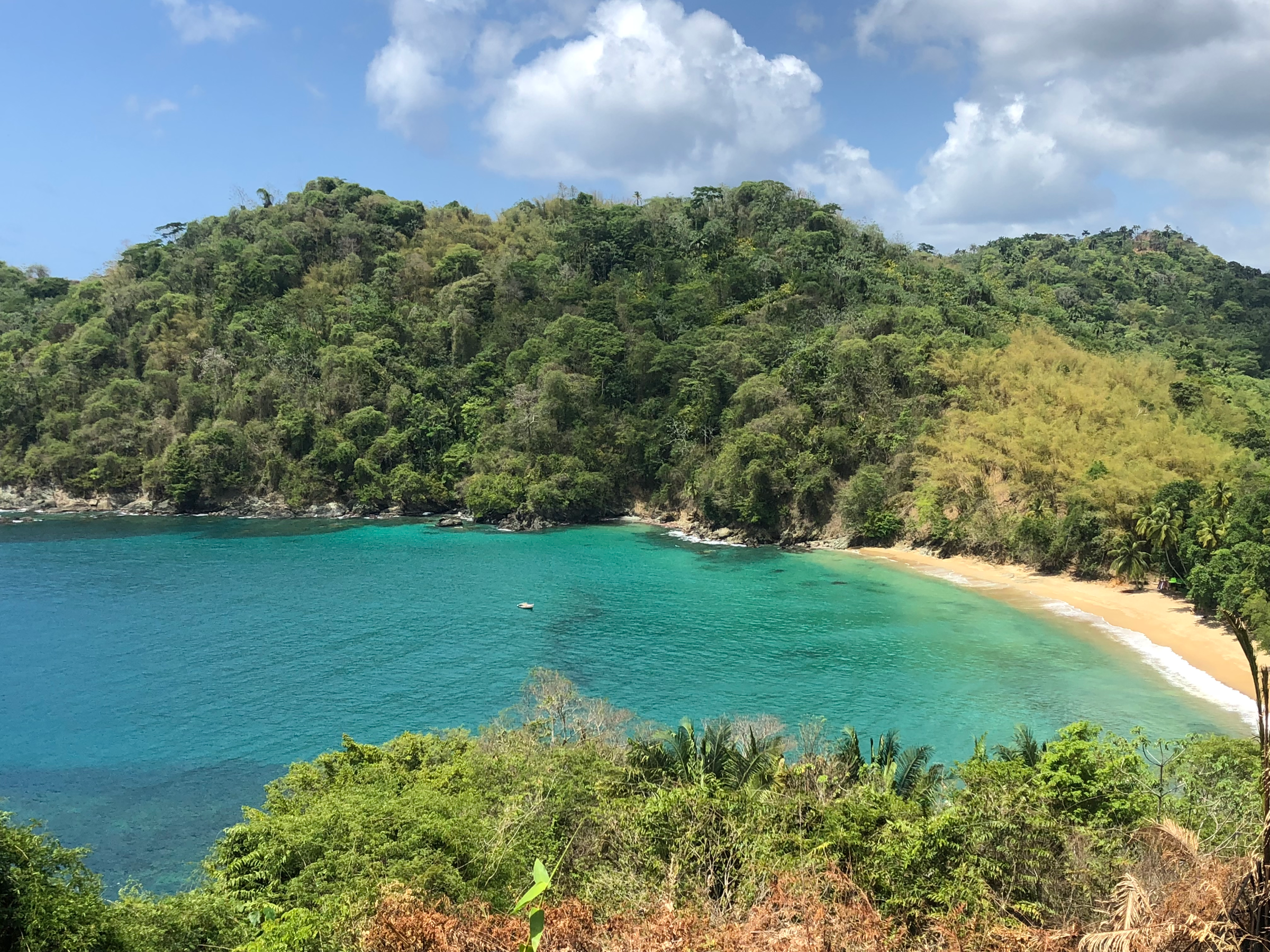
As you follow the road east from Castara, you will come across a series of stunning bays that look like postcards or oil paintings come to life. All of these beaches are owned and operated by the House of Assembly, but facilities vary from beach to beach. Some contain changing areas and lifeguards, while others might not be home to much more than a restaurant or two behind the shore. We never went for a swim, but it is definitely possible to take a dip at any of these beaches if you so desire.
Parlatuvier
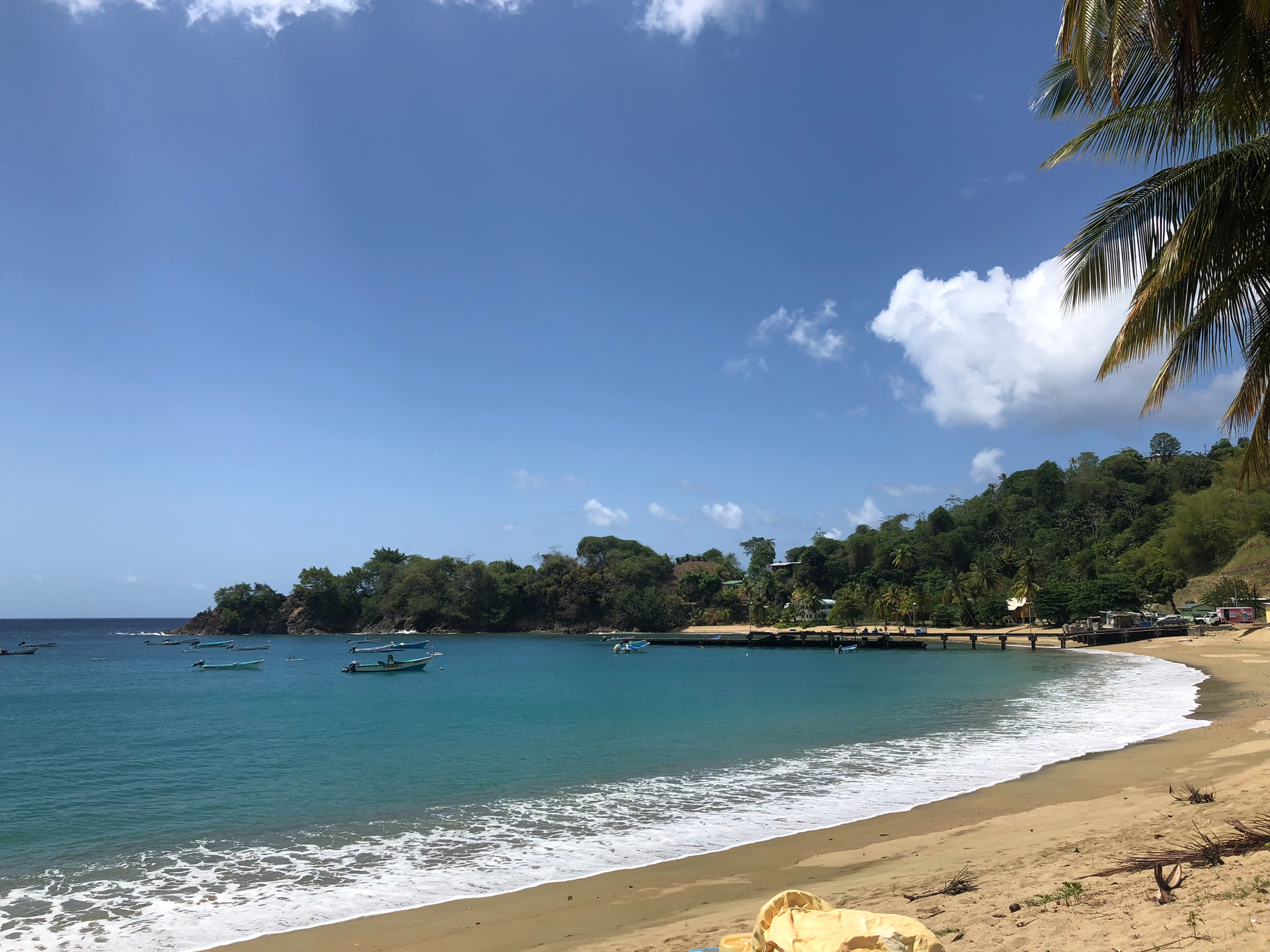
Parlatuvier, with it’s bay and nearby waterfall, does contain a number of guest houses and would make an ideal location to spend the night if you wanted a break from energetic Scarborough. The bay drops off rather quickly and its jetty is a popular spot to practice deep sea diving; beware that there is no lifeguard on duty at this beach.
Bloody Bay
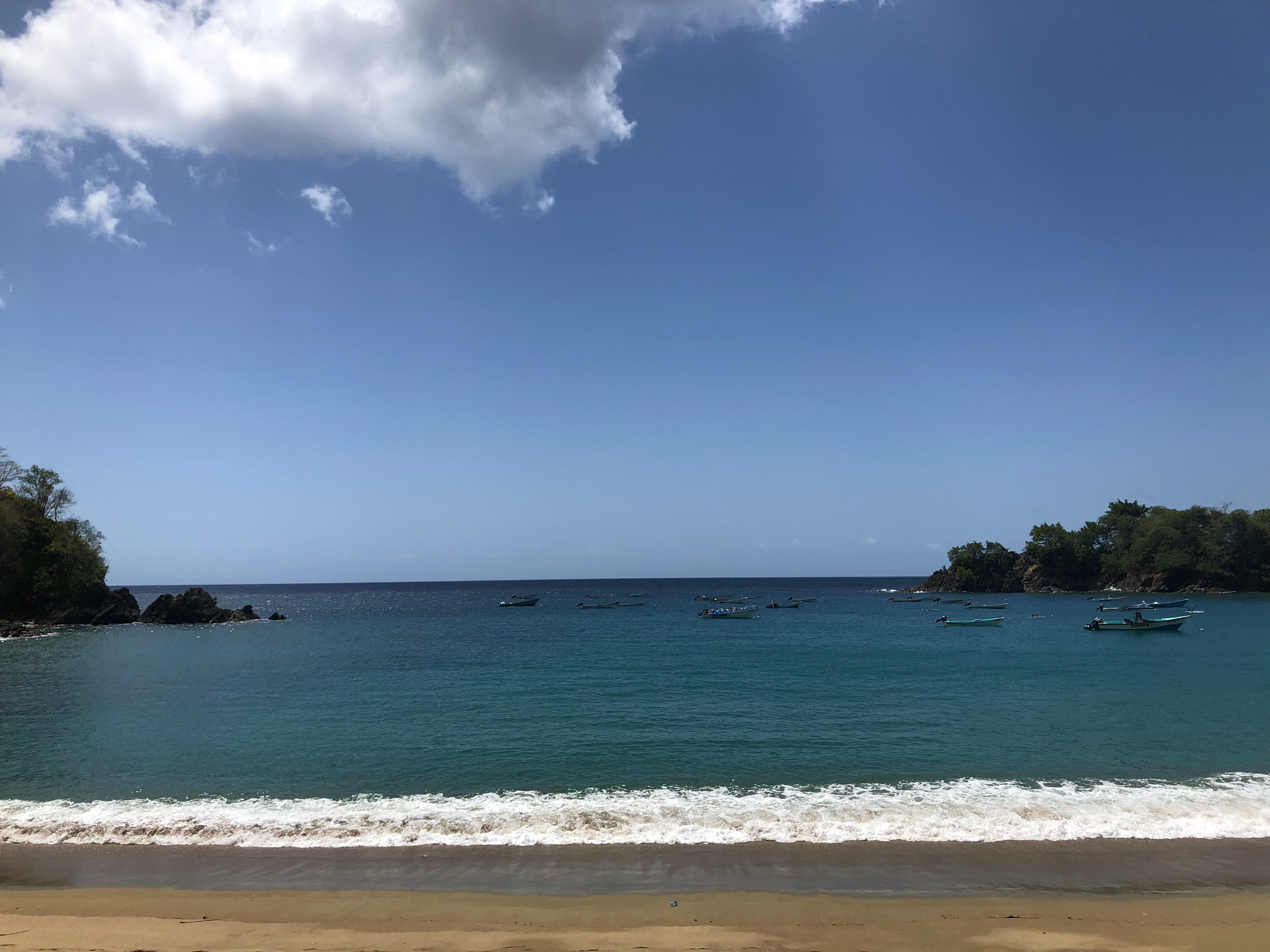
This ominously named stretch of sand was our last stop along Tobago’s Caribbean coastline. Bloody Bay’s turbulent past began in 1666; the French and Dutch fleets teamed up in an attempt to extinguish the British from the island for good. Somehow, the British forces were able to defeat both of their rivals, but not before suffering severe loses themselves. The battle was so great that the waters of the bay were said to have turned crimson by day’s end.
As history is apt to repeat itself, in 1771 African slaves staged a rebellion in the hills behind Bloody Bay against their British captors. Scores of men on both sides were killed, causing the river that flows into Bloody Bay to once more run red with blood. (The river has henceforth been known as Dead Man’s River.)
Despite the tumult behind Bloody Bay’s etymology, the beach is quite calm and peaceful today. The same fishermen bobbing in their boats throughout the day will while away the evening hours on the beach, beer in hand and bonfire ablaze, with soca music filling the air.
Tobago Forest Reserve
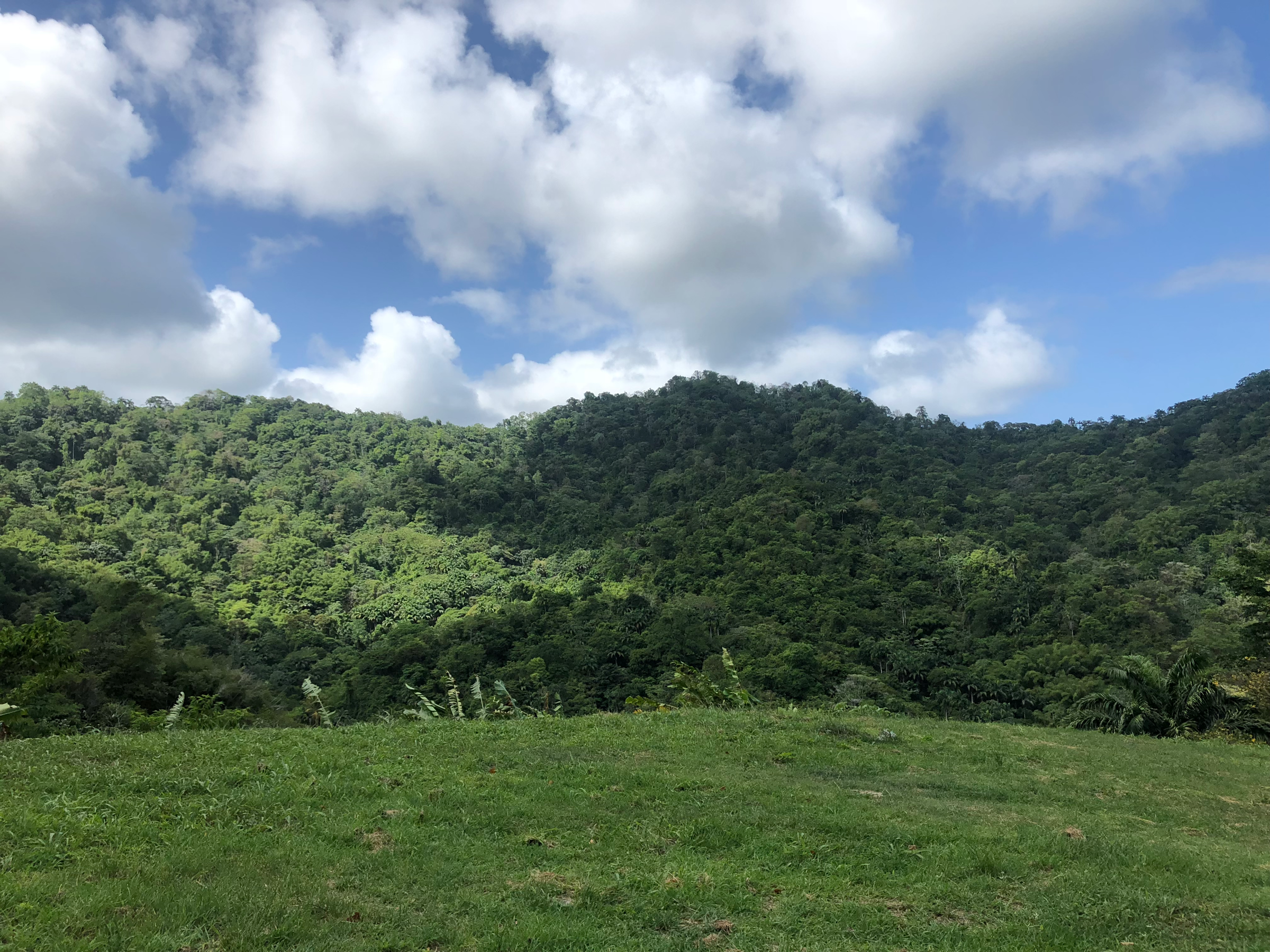
If you make a right at Bloody Bay, you’ll drive straight across the island and directly through the Tobago Forest Reserve, the oldest protected rainforest in the Western Hemisphere. The Roxborough-Parlatuvier Road was constructed in 1958 and was the first paved road in Tobago to connect the Atlantic and the Caribbean sides of the island. You could easily spend several days hiking the trails of the Forest Reserve, but on our quick tour, Leo stopped at the visitor info lodge, which has a viewing platform that looks out over large sections of the rainforest.
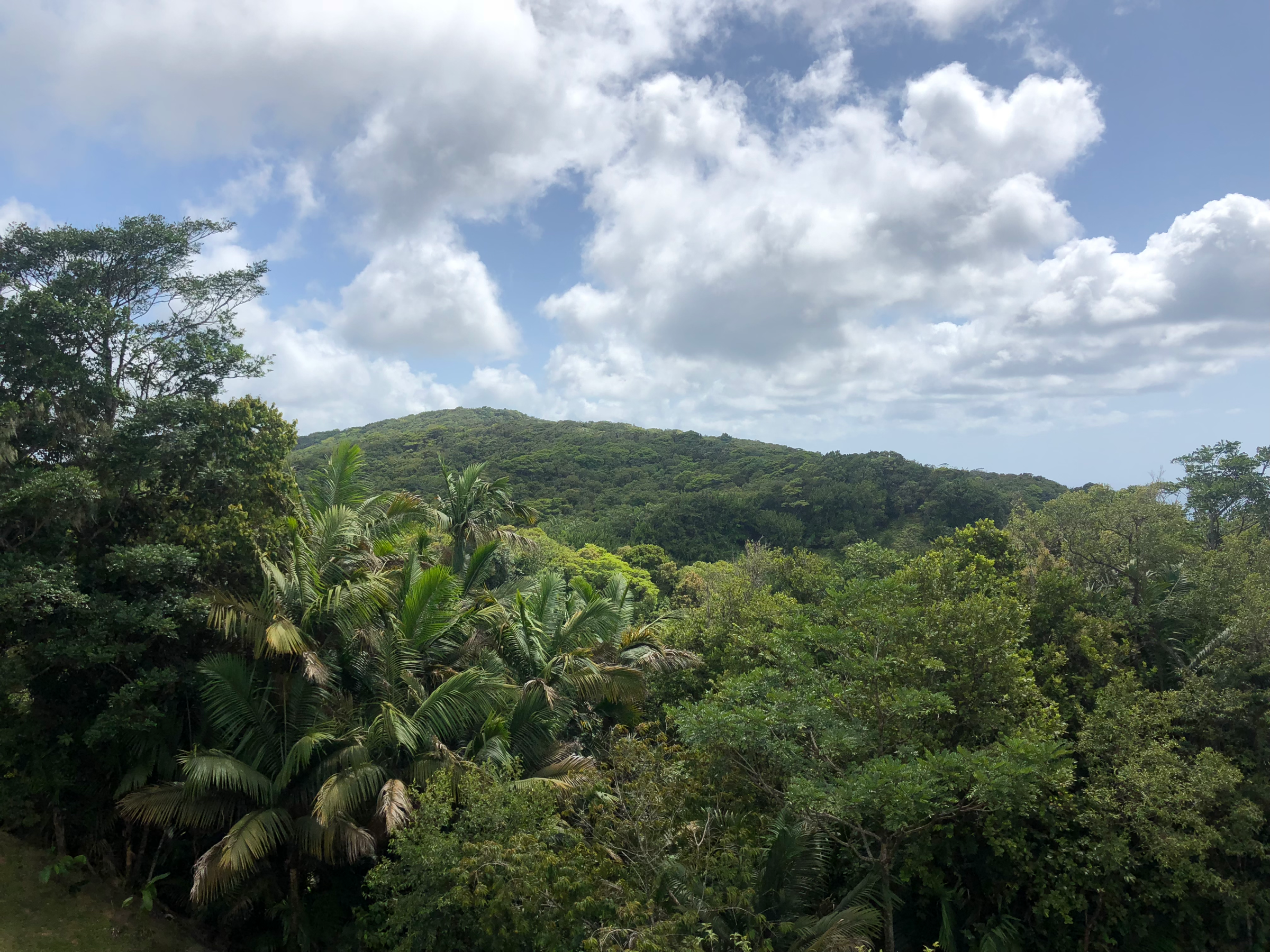
The forest averages about 380cm (149in) of rain each year, acting as a vital source of fresh water on the Caribbean island. It was with this argument that British colonists persuaded the government in London to draw up environmental protection laws against deforestation of and construction along the Main Ridge in 1776. Approximately 9730 acres were deemed “protected” and the passage of this act is seen as one of the forerunners of all modern conservation laws.
Today, the Tobago Forest Reserve has been shortlisted by UNESCO as a natural cultural heritage site and will likely gain full status in the organization’s tome of protected sites in the next few years. The forest is home to 220 species of birds, mammals such as armadillos, agoutis and wild hogs, tree frogs, 24 species of snakes and Tobago’s largest reptile, the green iguana, which can grow to 2m (6ft) long and will shed its tail when threatened or scared. The green iguanas dwell in the canopy, 30m (100ft) above the rainforest floor.
You are free to hike the trails on your own, but it’s highly suggested to pay one of the official guides to lead you through the forest, as hikers have been known to get lost easily in the dense foliage. The Gilpin Trail is the reserve’s most famous route; mud boots will be provided to you by your guide as the wet ground can be quite challenging in tennis shoes due to the high volume of rain it receives.
Argyle Falls
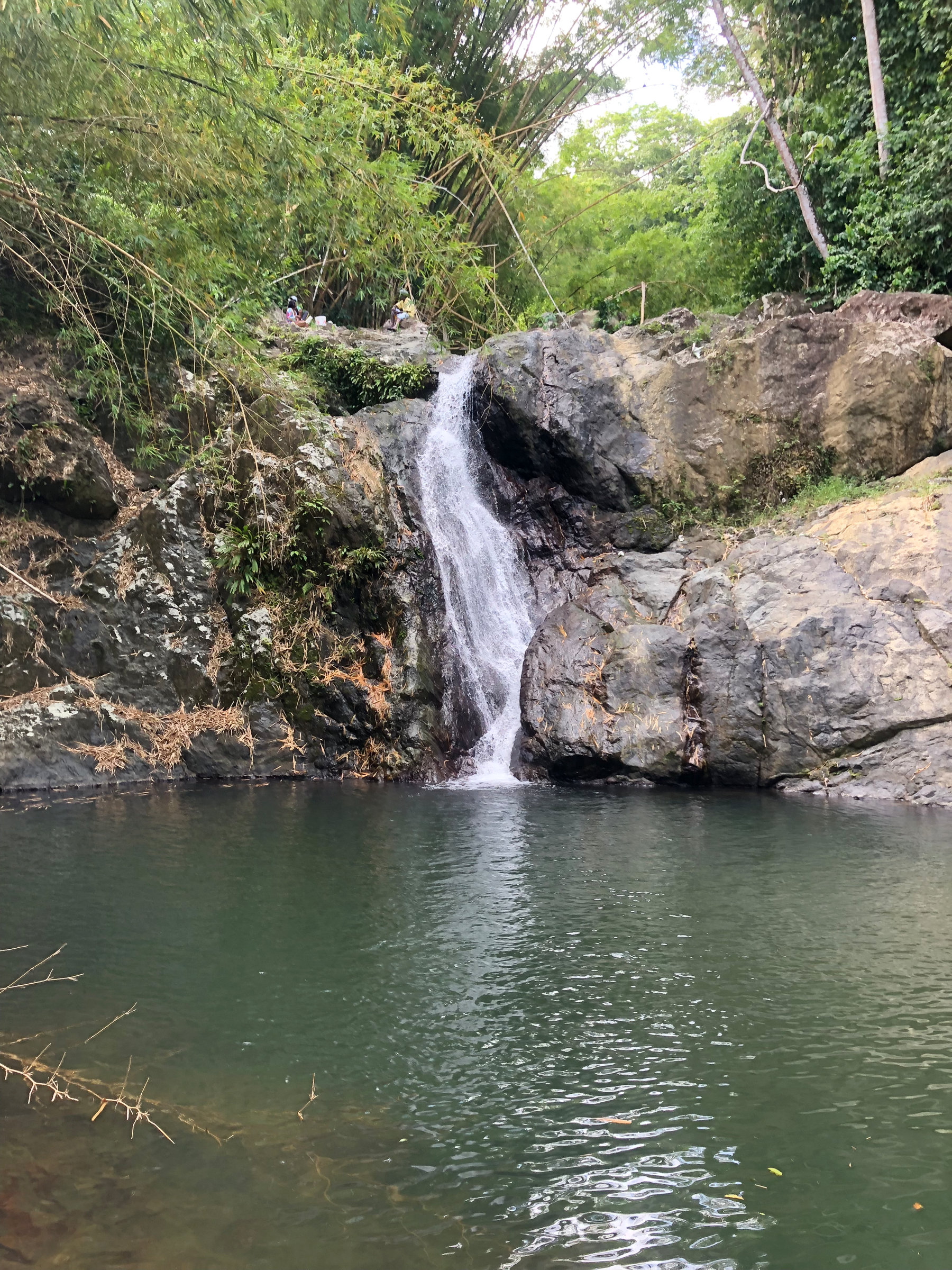
With our limited time, Leo and Reine were unanimous in their decision to take me to their favorite spot along the Main Ridge: Argyle Falls, a 54m(175ft) three-tier waterfall, that also happens to be Tobago’s tallest. The entrance to the falls is next to a working cocoa estate that produces Tobago’s finest chocolates. It’s possible to set up a tour of the cocoa factory, but you can also purchase its chocolates at any supermarket in Scarborough.

Due to the vast number of bird species in the unspoiled Tobagonian rainforest, birdwatchers come to the island specifically to wander the trails and catch sight of the many birds that are not only endemic to the island, but to this day cannot be seen anywhere else in the world, outside of zoos and bird sanctuaries. I personally don’t know much about birds, but I can tell you that the trees were more than alive with the sounds of their music that fill the air.
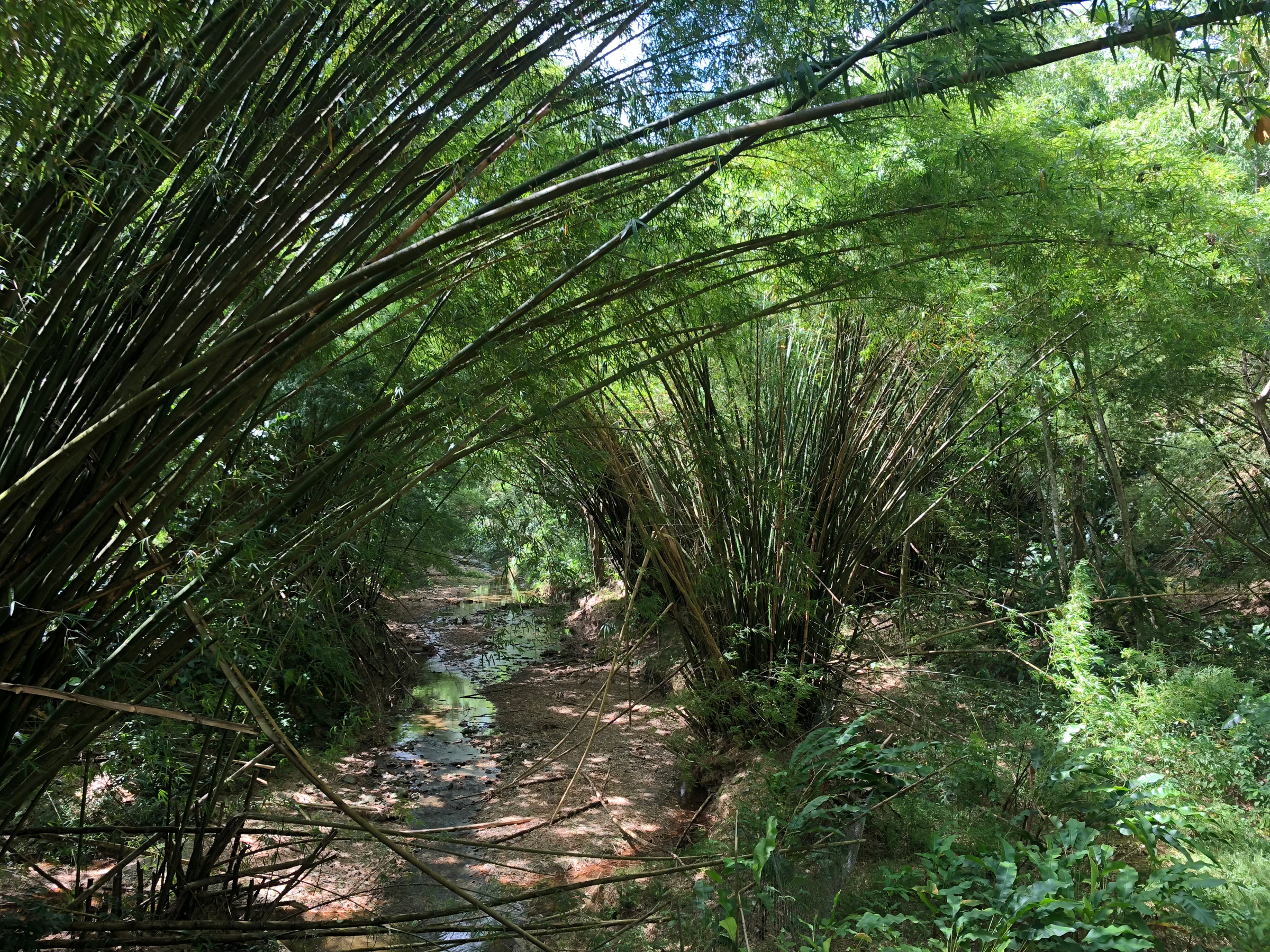
Enormous bamboo plants can be found along the path to the falls, but I learned these tubular towers are not native to Tobago. Bamboo is fast-growing relative to its size and can spread quickly if not careful monitored and kept in check. The bamboo must be pruned and controlled so that it does not overtake and snuff out the other vegetation beneath the canopy.
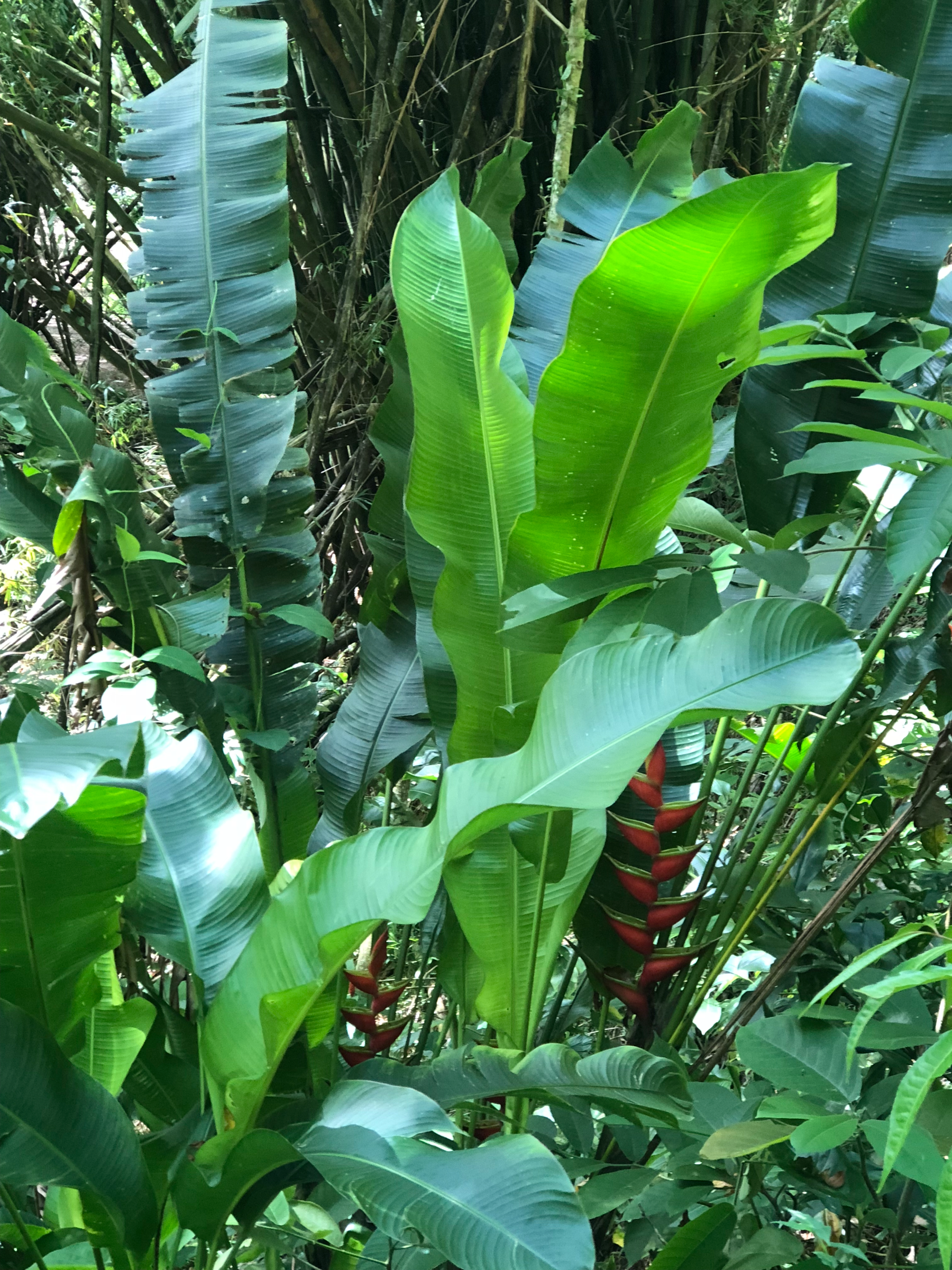
And what wondrous plants and flowers are to be found along the way! The constant rainfall keeps the leaves an almost iridescent green and you’ll notice the petals on the flowers above have evolved to capture this rain water and absorb it as needed throughout the hot afternoons. Hummingbirds flitted through this undergrowth, but they were far too fast for me to catch on film.
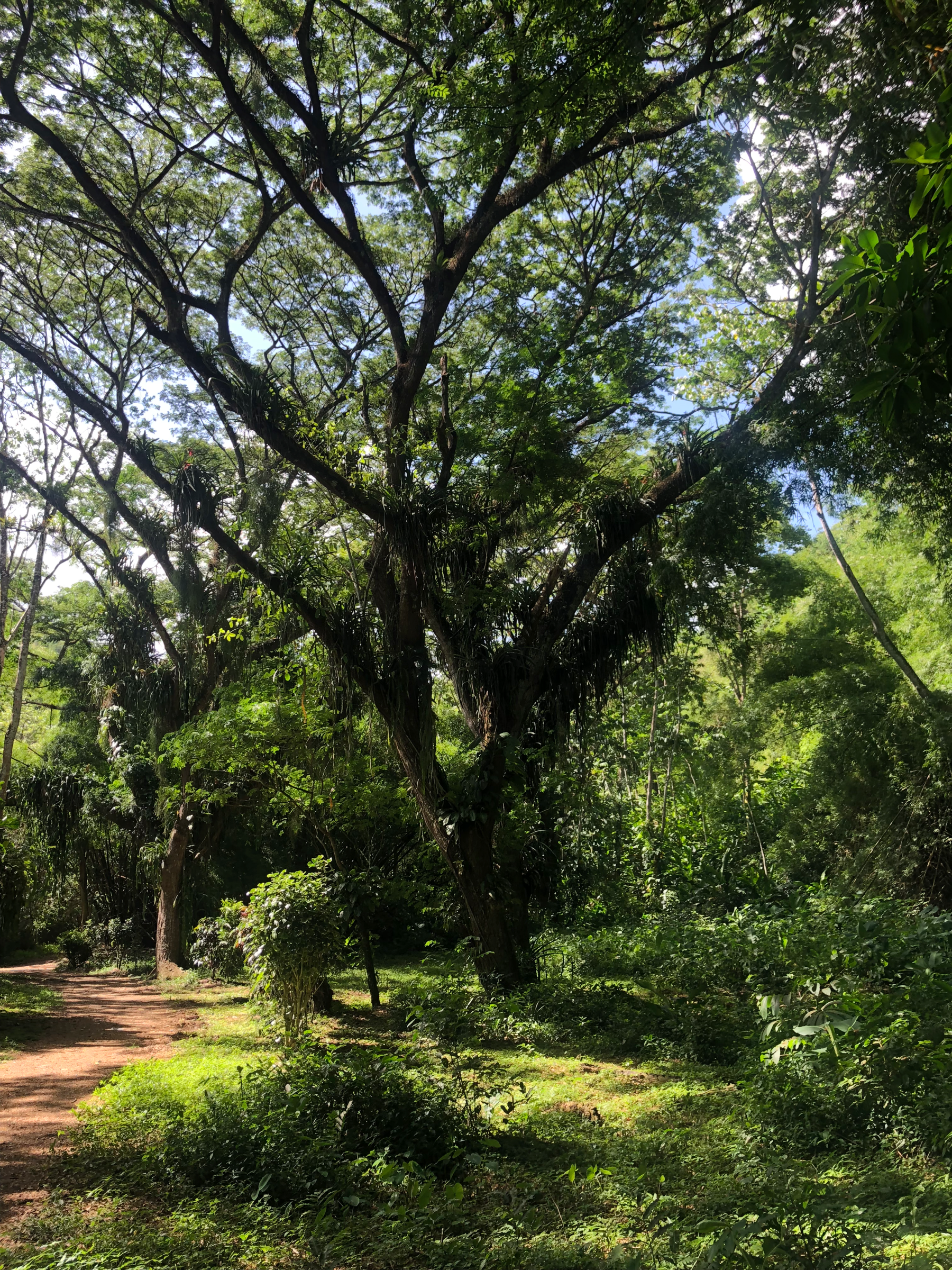
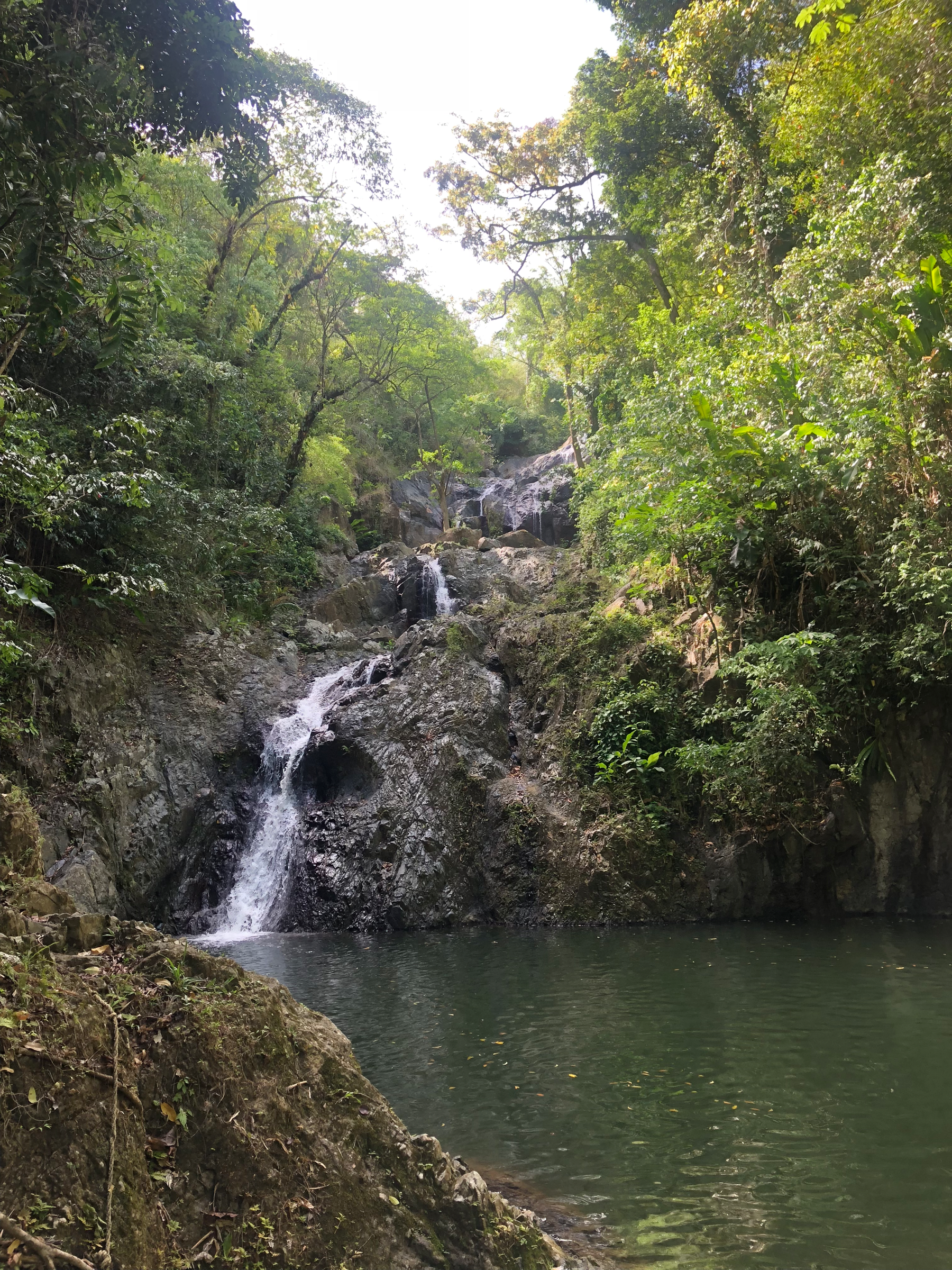
It only takes about 15-20 minutes to reach the base of the falls, but the arduous adventure kicks in if you’re brave enough to claw your way up the steep side of the mountain in order to reach the top of the waterfall. Following directly in Leo’s footsteps, all three of us eventually made our way to the highest of Argyle Falls’ three pools where we took off our shoes and soaked our feet in the cool waters. I truly enjoyed my time at the falls and would highly recommend coming here. I don’t think I would have ever ventured up to the summit on my own, and making the trek with Leo and Reine only bonded us even more.
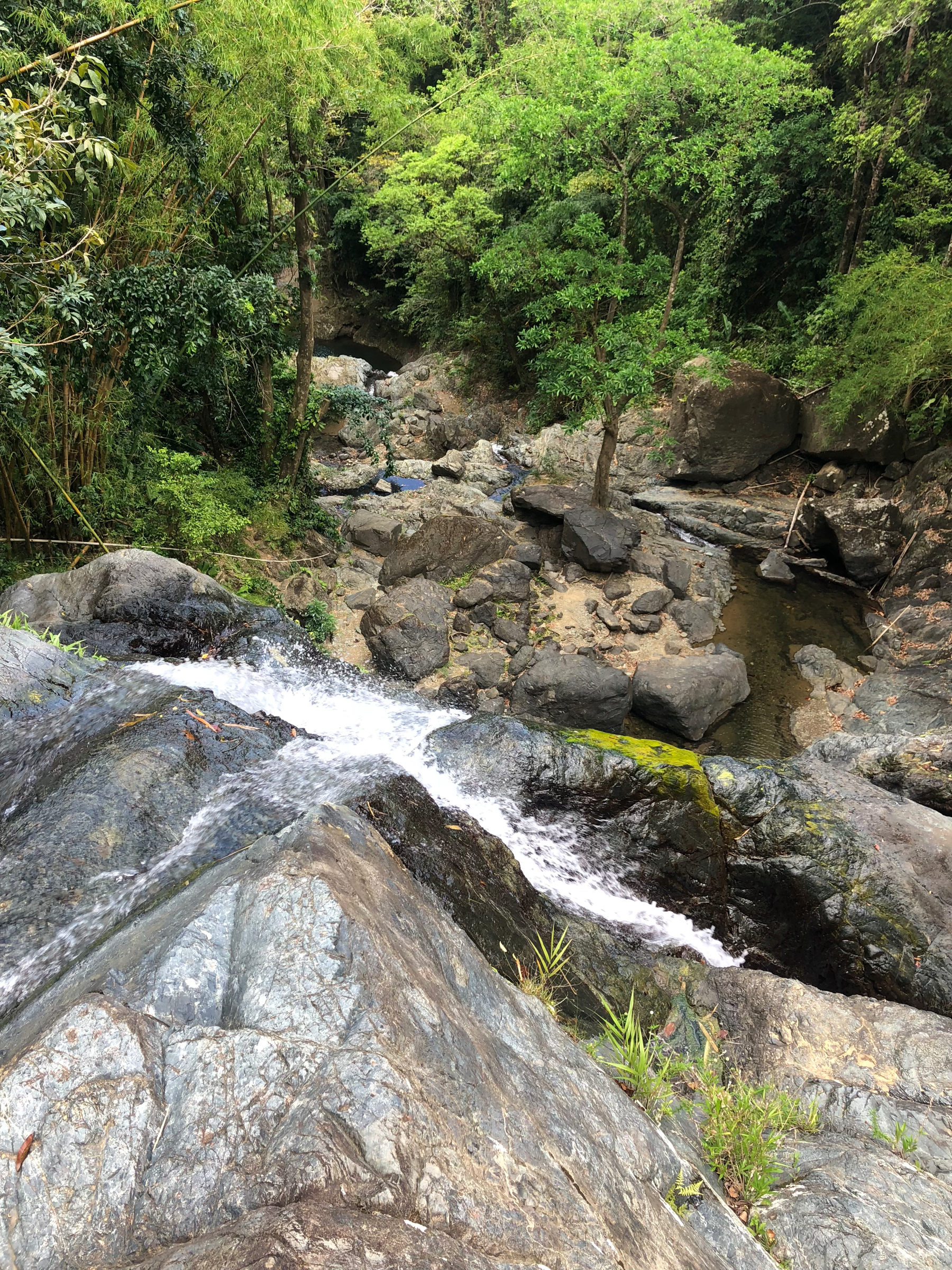
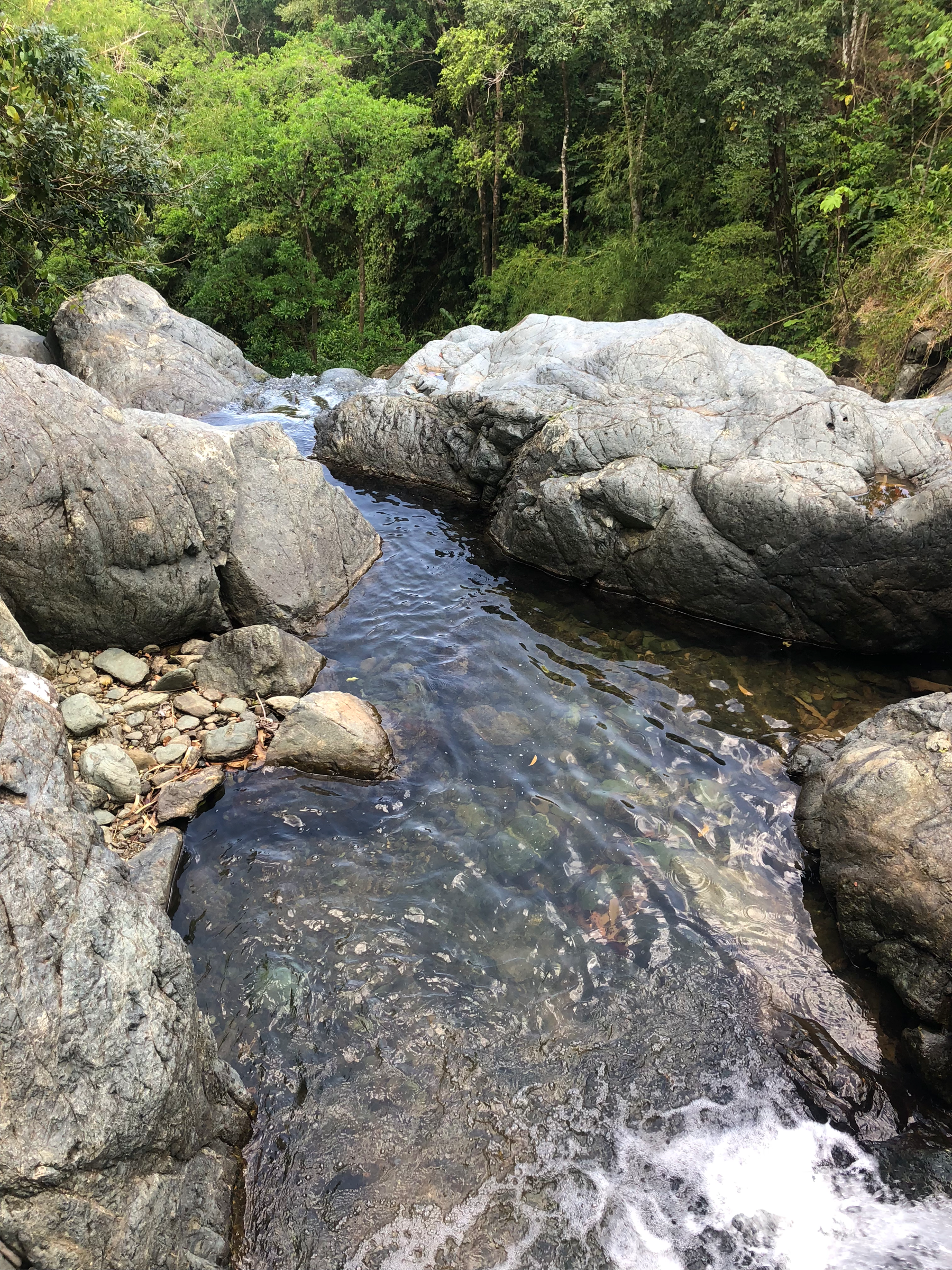
Speyside Water Wheel
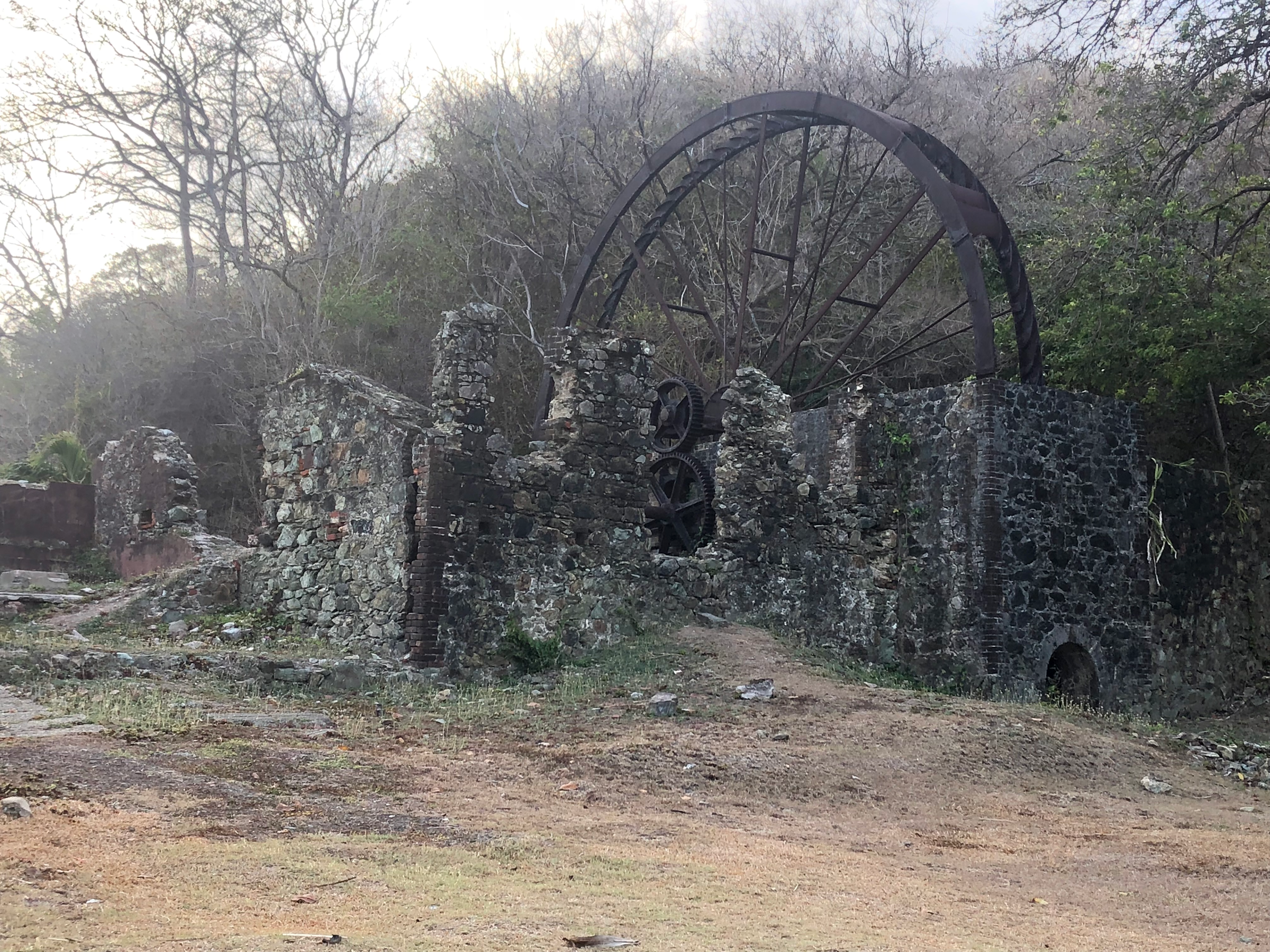
After we dried off and made our way back to Leo’s car, there were only a few more stops left on our journey before returning to Scarborough for dinner. First up were the ruins of the Speyside Water Wheel, which once was used on a former British sugar plantation to extract the sweet juices from the sugar cane. The stalks were fed into the mill on rollers and crushed by the power of the spinning wheel. The liquid was collected below in a boiler, where it was heated until the sugar was extracted from the viscous substance.
Charlottesville and Flagstaff Hill
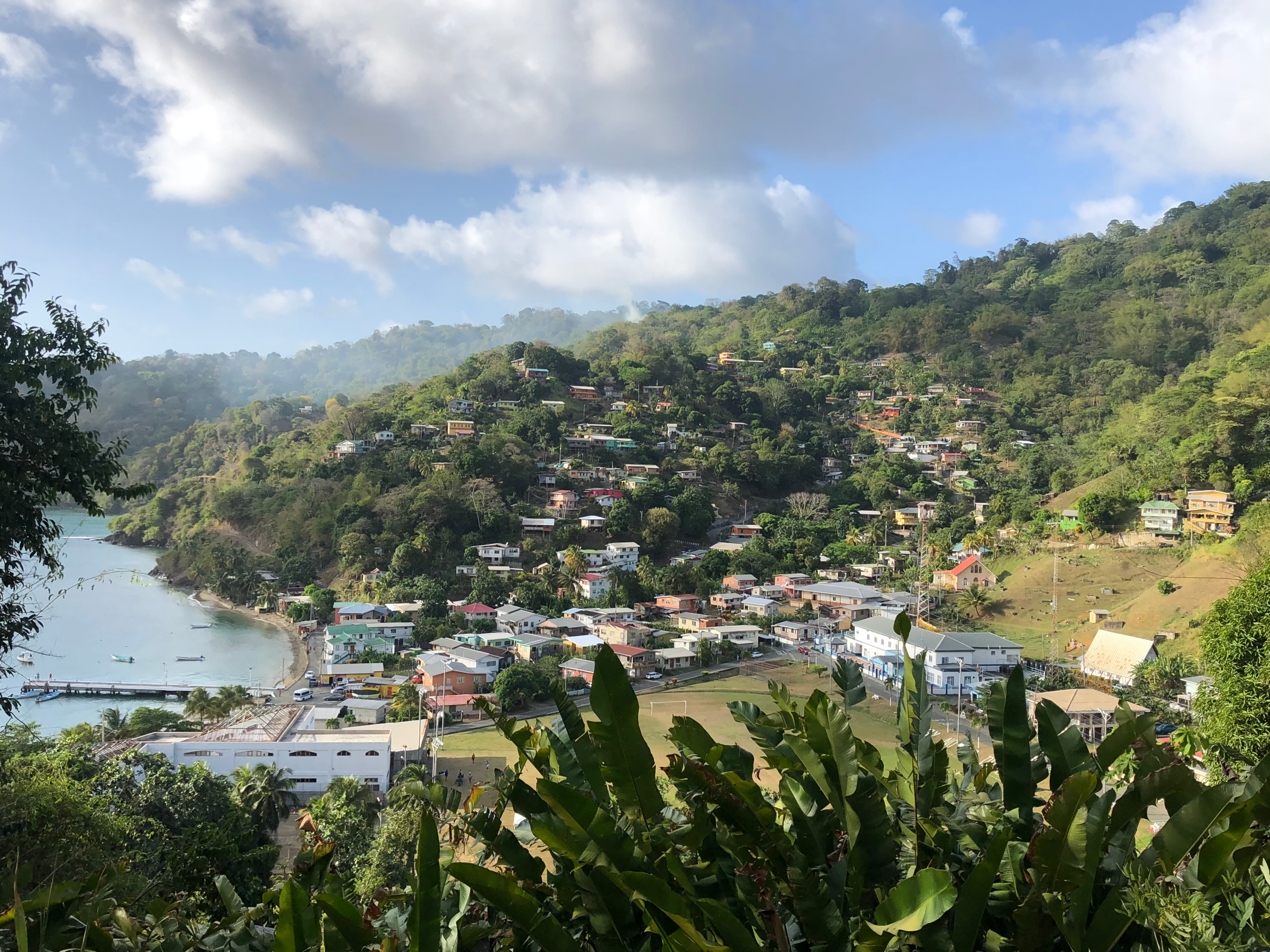
In Tobago’s northeasterly tip rests Charlottesville, the oldest surviving European settlement on the island, dating back to the Dutch colony that was founded here in 1633. Today, Charlottesville is the epicenter of Tobago’s fishing industry, accounting for 60% of the seafood exported to the rest of the world.
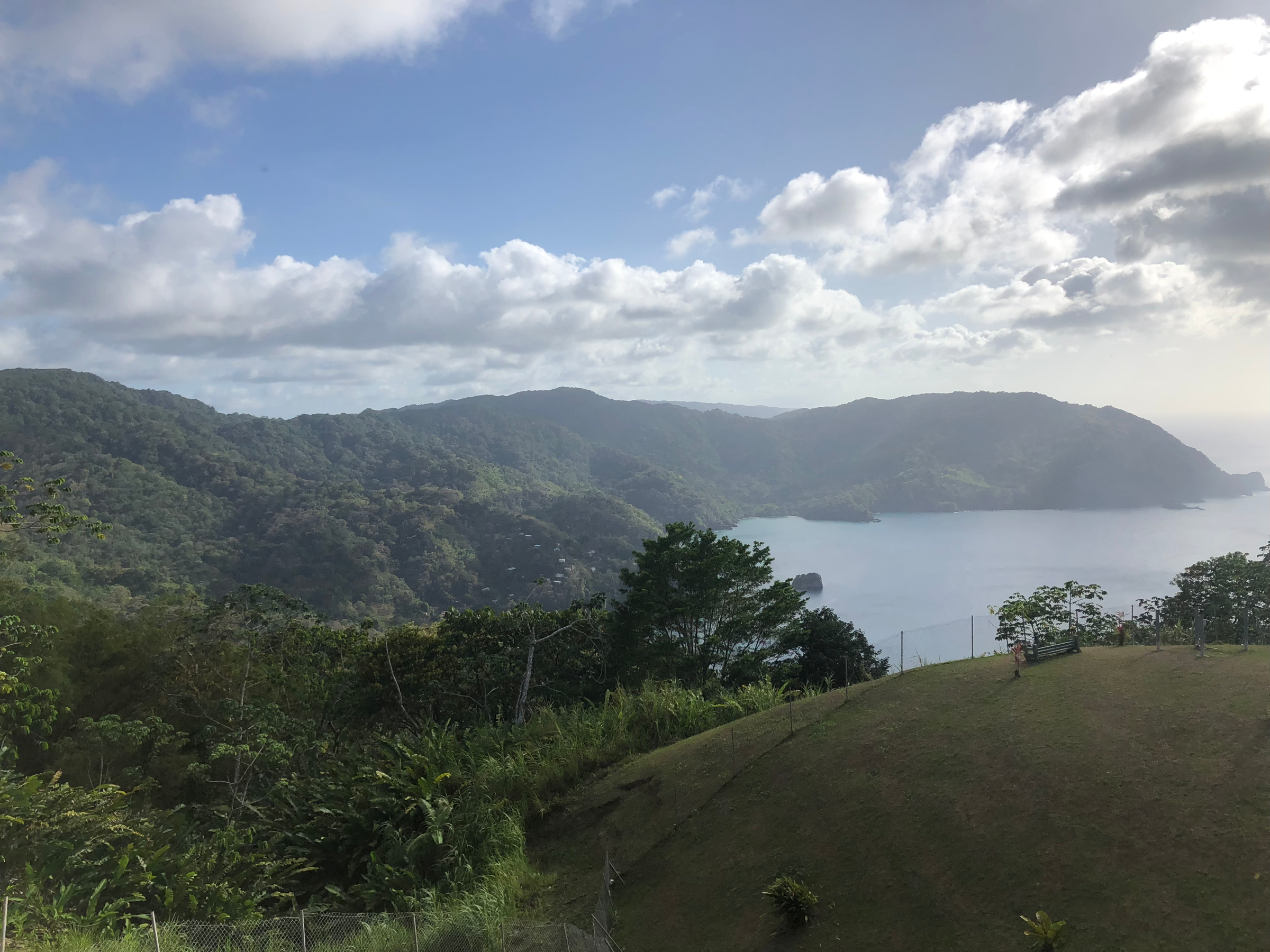
Behind Charlottesville is Flagstaff Hill, a 366m(1201ft) peak that houses Tobago’s radio, tv and cell towers. In colonial times, Flagstaff Hill was the first part of Tobago one would espy when approaching Tobago from the other Caribbean islands (Trinidad & Tobago are southern-most islands in the Caribbean, spitting distance from Venezuela). Both French and British troops stationed a garrison on the hill equipped with mirrors that were used to signal to the other bastions around the island when a ship was nearing its shores.
During World War II, the United States occupied Flagstaff Hill, building a military outpost and radio towers in fear of an Axis attack in the Caribbean. The likelihood of that happening was questionable, but the US took full advantage of expanding their sphere of influence into the Caribbean. It took more than a decade for the US to pull out and return the hill to the British and eventually Tobagonian control.
On our way to Charlottesville, we noticed some coconuts that had fallen from a tree along the side of the road. We picked them up, but I couldn’t figure out for the life of me how we were going to enjoy them- that is until Leo pulled the machete out of the trunk of his car! You probably wouldn’t want to get pulled over in The States with a knife the size of small child in your backseat, but in Tobago it’s completely normal travel with what amounts to a very large can-opener for coconuts. I’ll let the video of Leo’s skills speak for itself, but needless to say, I was very impressed. Plus, the coconut water was delicious! What a sweet treat to cap off our final stop before returning to the capital.
Doubles
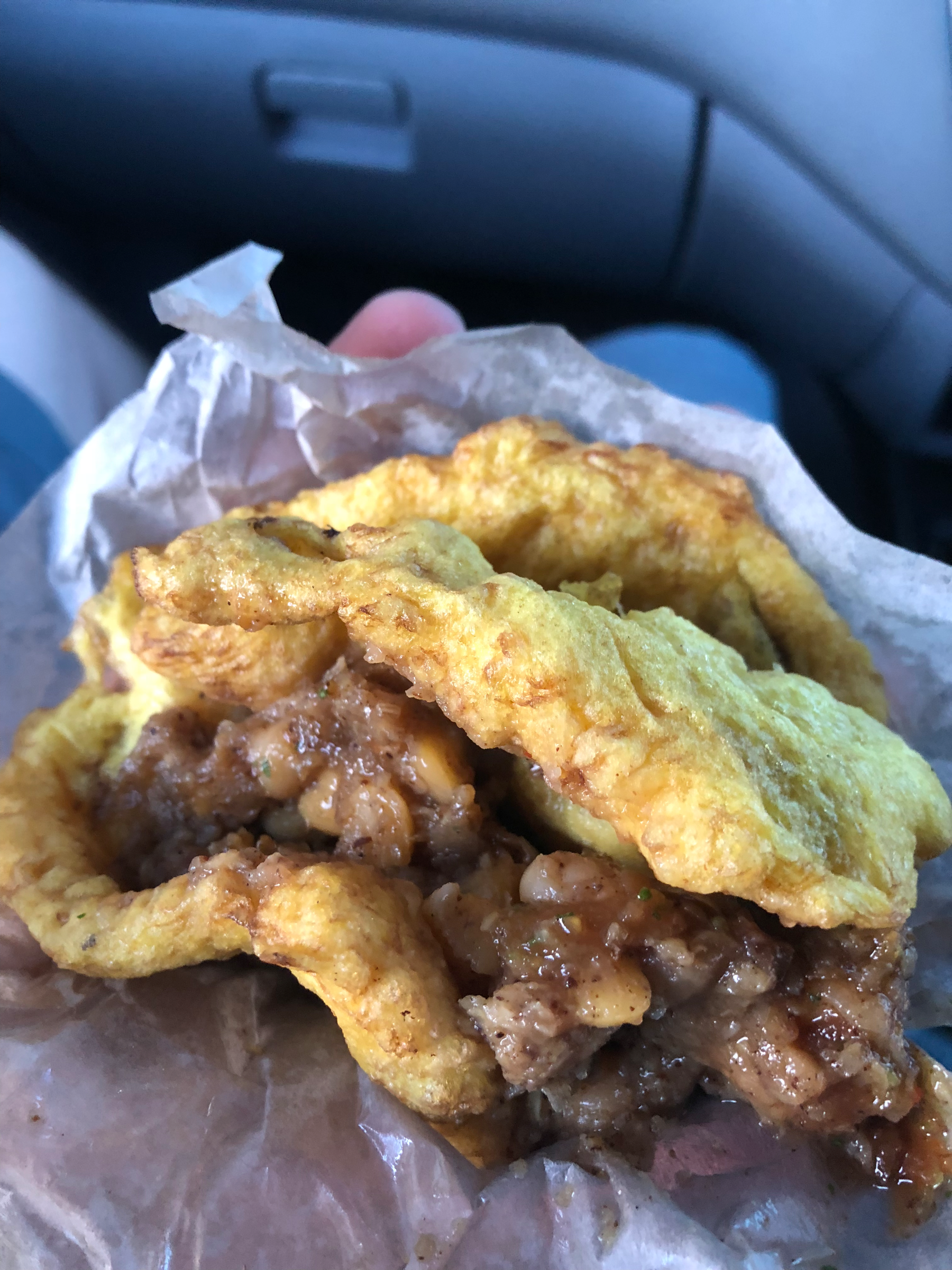
“This is Doubles,” Leo said, as we savored Trinidad & Tobago’s most beloved street food back in Scarborough. Patsy’s Doubles, right on the harbor in downtown Scarborough, is the best place to buy Doubles hands down. Doubles is comprised of bara, a flat, fried dough, stuffed with chana (curried chickpeas), with assorted cooked vegetables and spices.
The name sprang forth from customers asking for double the bara to hold all the chana that was apt to fall out the sides of the pita-like sandwich. Doubles can be served sweet, spicy or savory (I recommend spicy!); Patsy’s has a devilish pepper sauce that will clear your sinuses right out. Mango chutney, tamarind and coconut may be added if you prefer a sweeter version.
Doubles is said to unite the Trinidadian and Tobagonian diaspora around the world. No matter what argument or disagreement you may engage in with your fellow countrymen, there will always be a unifying force in your love for Doubles! (I obviously must have a little Tobagonian blood in me, as I totally feel the love for Doubles and will think of my time with Leo and Reine every time I am fortunate enough to eat one.)
Angostura Bitters
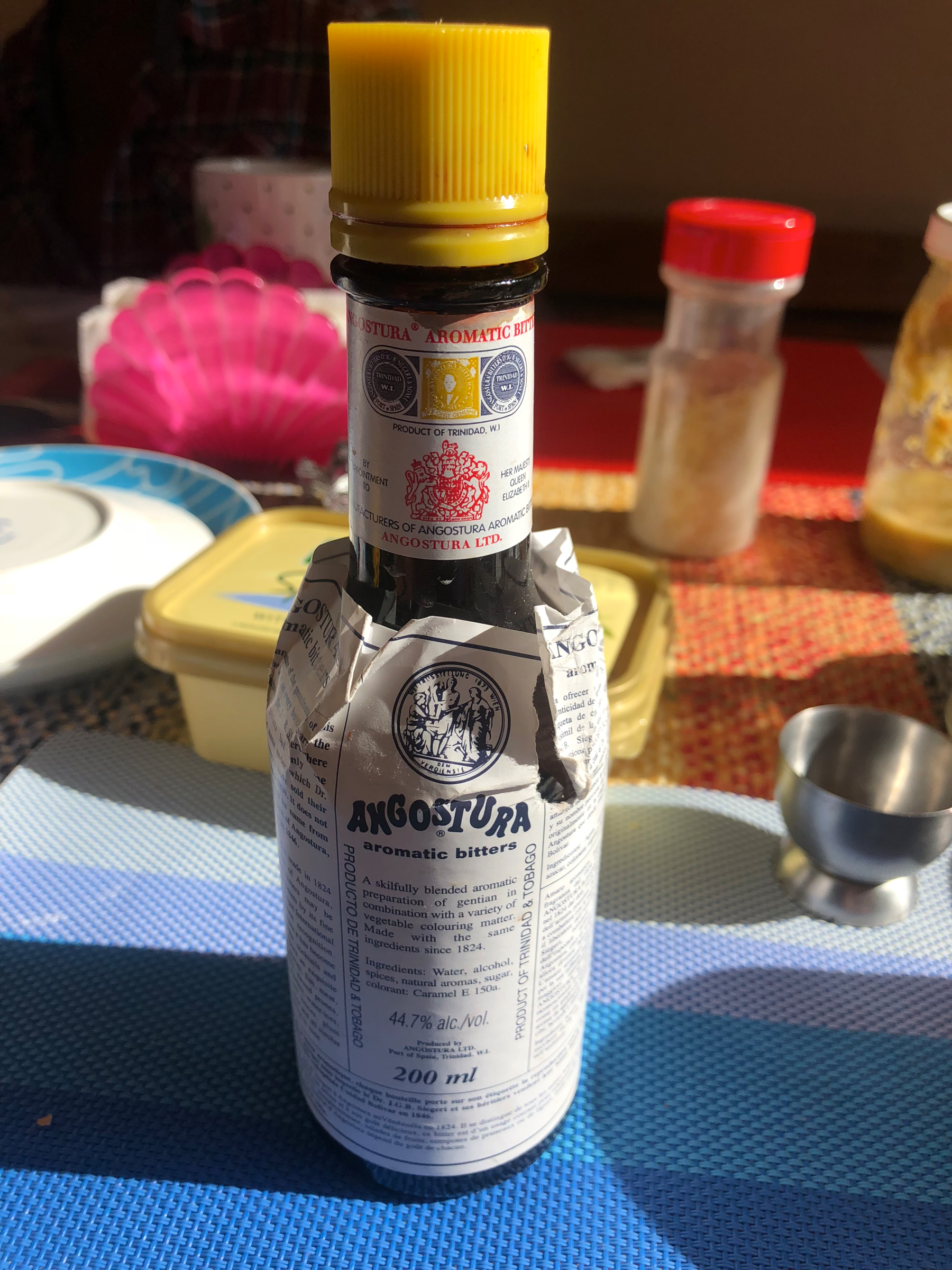
Imagine if I had turned down Leo’s offer and stayed locked into whatever I had planned for that day in Tobago. No matter what I may have done, I can’t imagine it would have been half as enriching as spending the day with two locals-turned-friends who took me everywhere up and down the island. Sometimes you have to use your best judgement and know when to stick to your guns and not give in to peer pressure, while also recognizing when it’s shrewd to go with your gut and toss your plans out the window when a shining opportunity presents itself to you.
My time in Scarborough was briefer than I would have liked, but I made meaningful relationships with Leo and Reine; the hospitality I received from Joan and Len at my hostel, Hope Cottage, was equally above and beyond what I could have hoped for. In fact, everyone in Tobago gave a little bit more than they had to, making me feel welcome and at home the entire time I was there. It is very humbling to be met with such kindness from strangers, and I hope these Tobagonian tenets have rubbed off on me, if even just a little.
I’m going to wrap up my Scarborough adventure with the tale of Angostura bitters, an additive that gives everything it seasons an extra kick, just like my wonderful, new friends gave something extra of themselves to me.
Angostura is a family business that was founded in 1824 in Venezuela, although the company’s headquarters have since moved to Trinidad, where its bitters have been produced for over 100 years. Angostura bitters are 44.7% alcohol and are flavored with a blend of spices, herbs and gentian flowers. We mostly think of bitters being added to alcoholic drinks like Manhattans and Old Fashioneds, but Angostura suggests also adding their bitters to soups, cereals, salads, vegetables, gravies, jellies, jams, sherbets, ice creams, grapefruit, sauces, puddings, mince pies, apple sauces and all similar desserts! Basically anything!
Len likewise swore by Angostura’s restorative properties. Have a headache? Take some bitters? A touch of indigestion? Try some bitters. A cold? A cough? A charley horse? You guessed it: bitters.
You’ll notice that on the label is the seal of Franz Josef I of Austria, who awarded Angostura with a first-prize ribbon at the 1873 World’s Fair. The recipe is highly-guarded; in fact, only one person on earth knows the complete recipe in its entirety. Certain workers have been told how to prepare certain ingredients, but only one current family member ever knows the exact ratio with which one should balance the various elements that make up the bitters.
I feel like this story of the bitters really encapsulates my time in Tobago. It’s steeped in history, adventure and humor- the stuff from which legends are born. You seem to know and understand it, but it also remains a mystery at the same time. I hold me time in Scarborough near to my heart and am thankful to everyone who went the extra mile to upend my plans and make my stay here so special.
